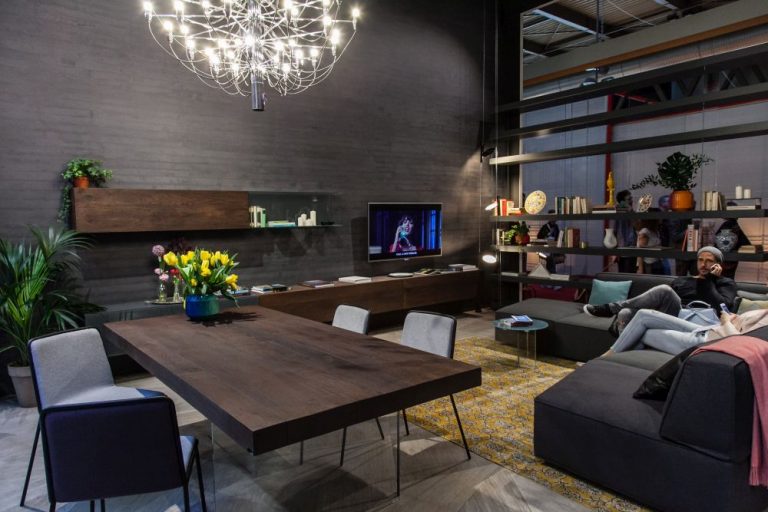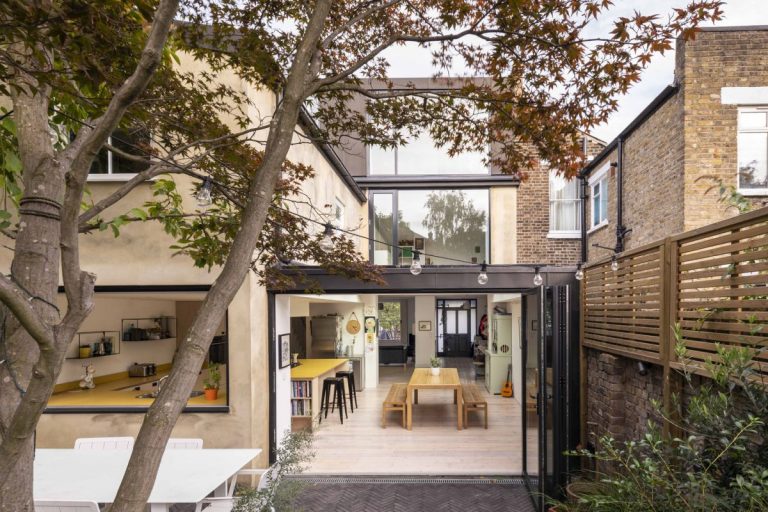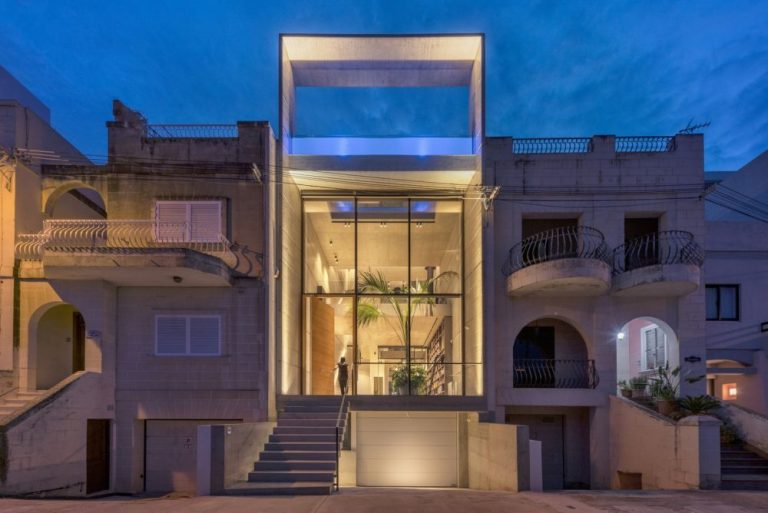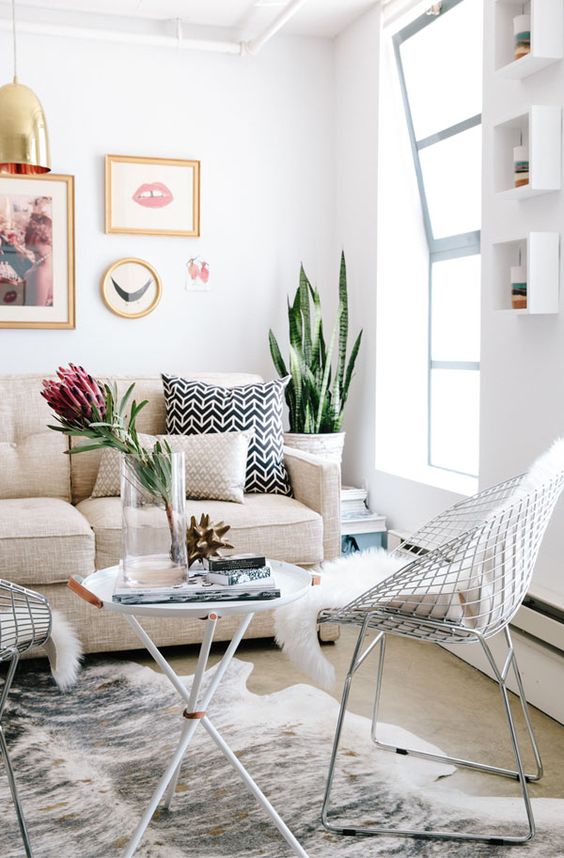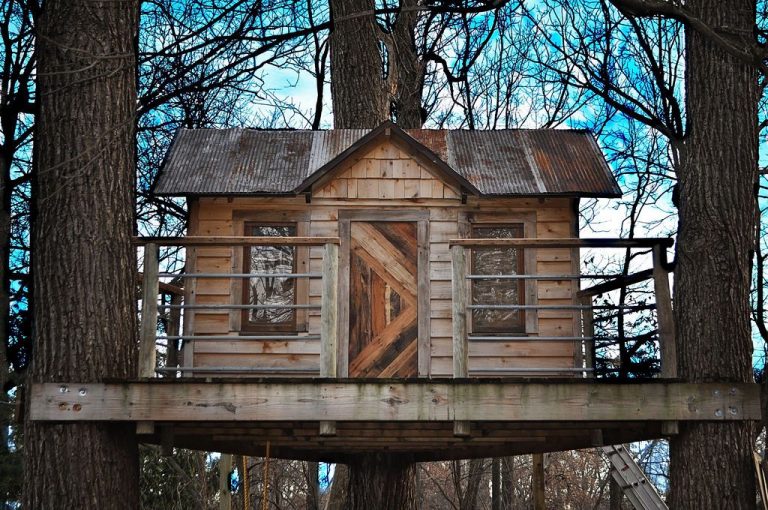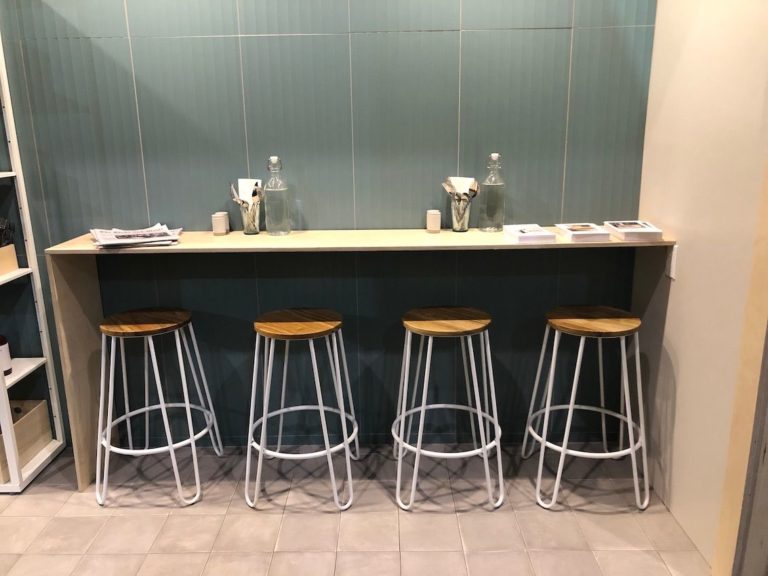Don’t Want a Typical American House? Look at These Very Different Home Designs
Houses across the United States are as diverse as its people, varying not only by general style by but features that are often driven by the landscape and region of the country. An American house on the eastern shores, such as in Cape Cod, generally looks nothing like a house found on the California Coast or along the beaches of Florida. The same can hold true for all the regions through the rest of the country, especially if you overlook the generic style of American houses that can be found just about anywhere from coast to coast. The diverse climate and landscape — along with the cultures of the people who settled there — all have an influence on the look of a home. Here are some gorgeous examples of houses that are built for the American lifestyle and capitalize on their surroundings.
Coastal Refuge Focus on Stunning Views
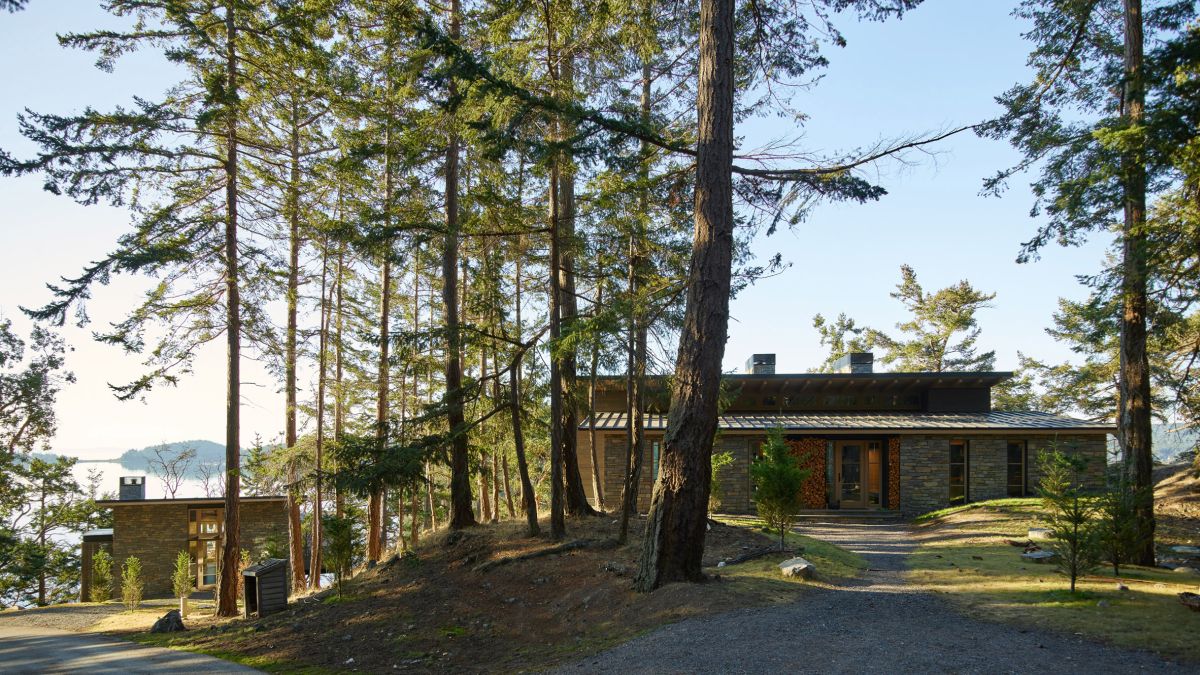
The sloping ocean shores of the Pacific Northwest are stunning locations for homes and this American house by Hoedemaker Pfeiffer was built to blend with the forest as well as take advantage of the marvelous views of Puget Sound. Sited in a remote location in the San Juan Islands the architects created a detached guest house to go with the main house, which is built into the slope. Made from stone, glass and wood, it was designed to evoke a former home in the Appalachian Mountains that was lost in a fire, but rendered in a way that does not recreate that home, but rather to give its spirit new form in the Pacific Northwest.” Down a path from the main house, the guest house has a similar aesthetic. Because of the steep slope, the second building features a cantilevered box off of one side, which has the dining room, giving the interior space the feeling of floating on air.
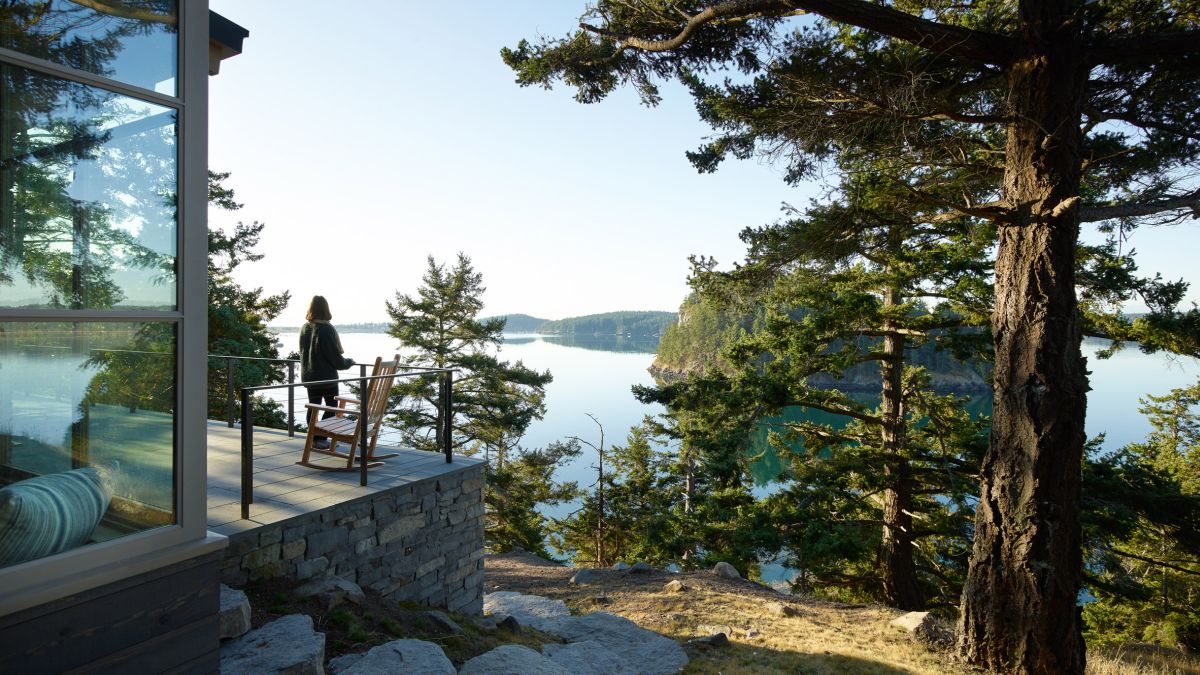
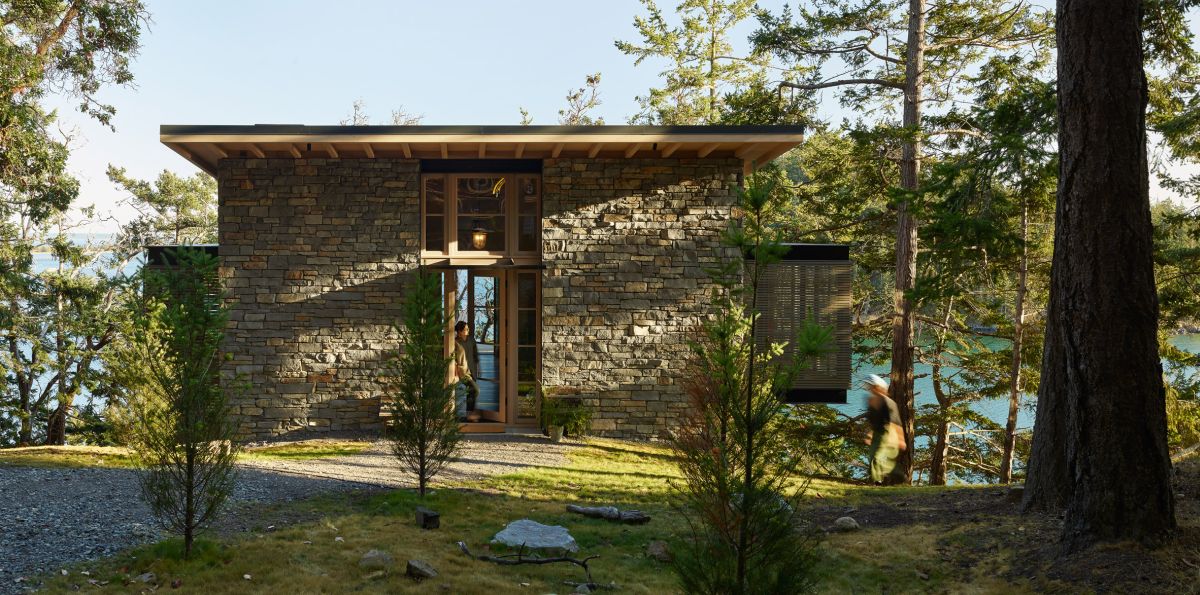
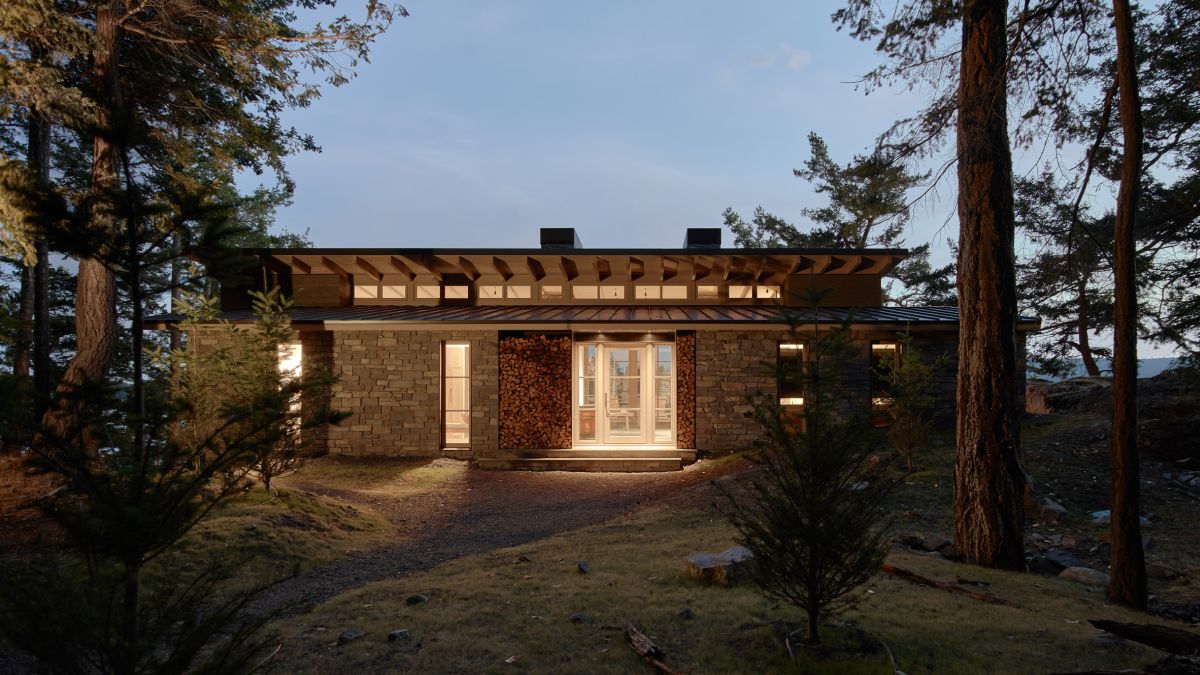
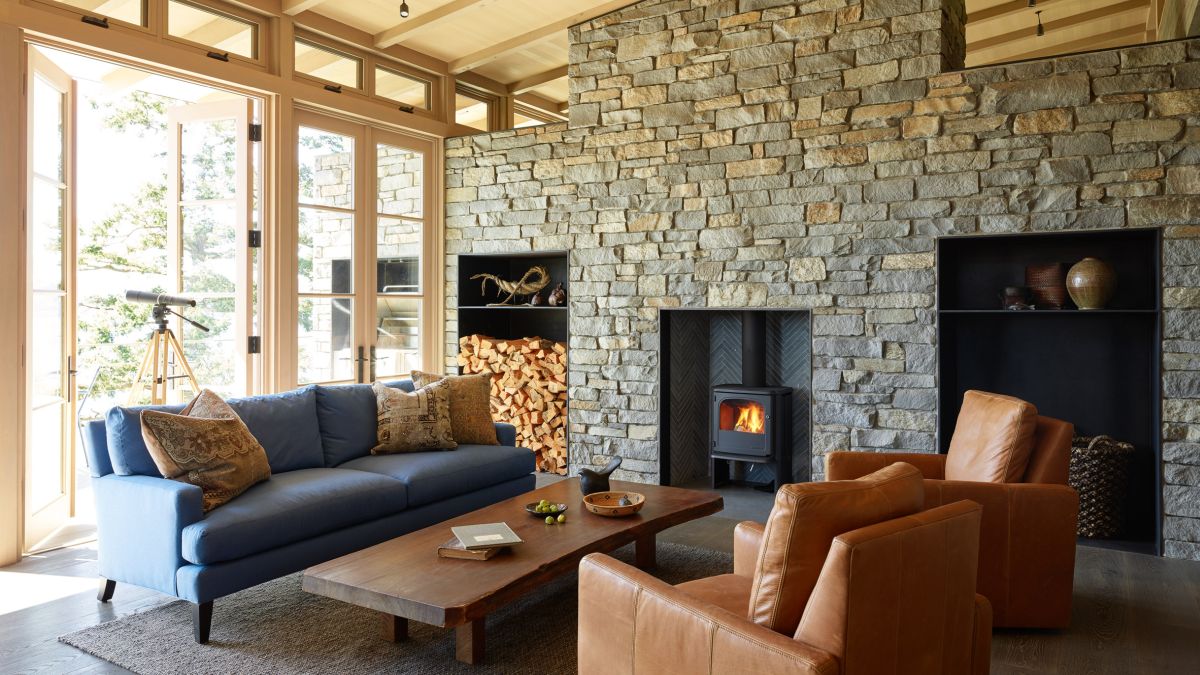
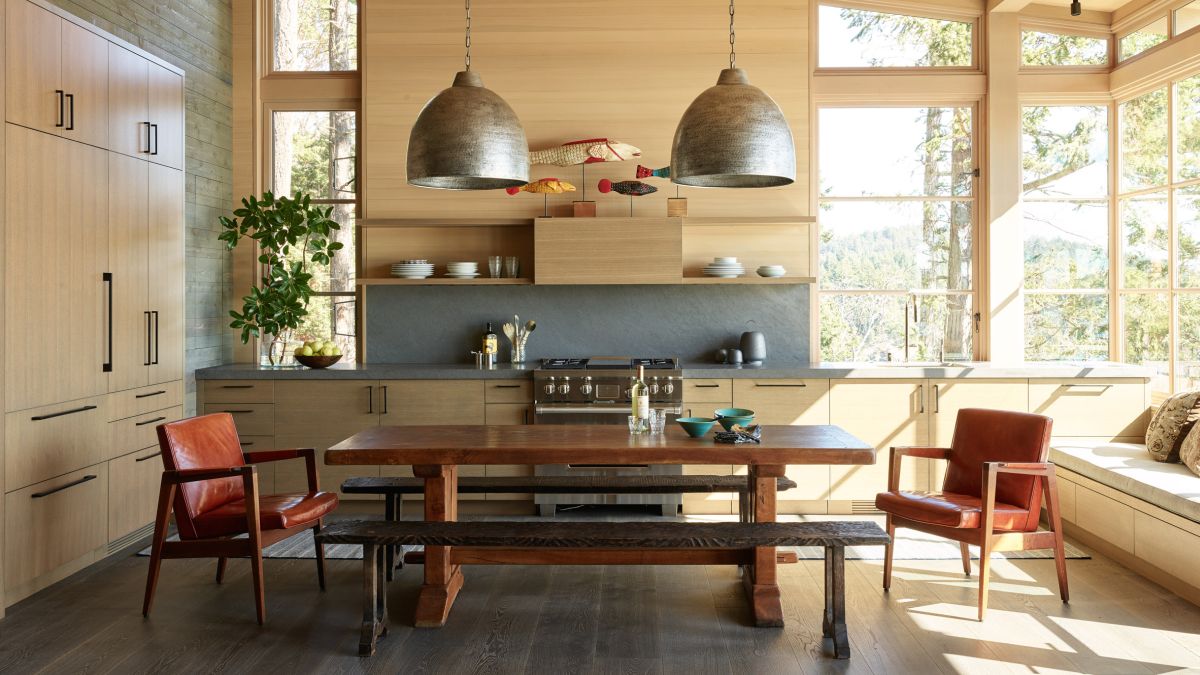
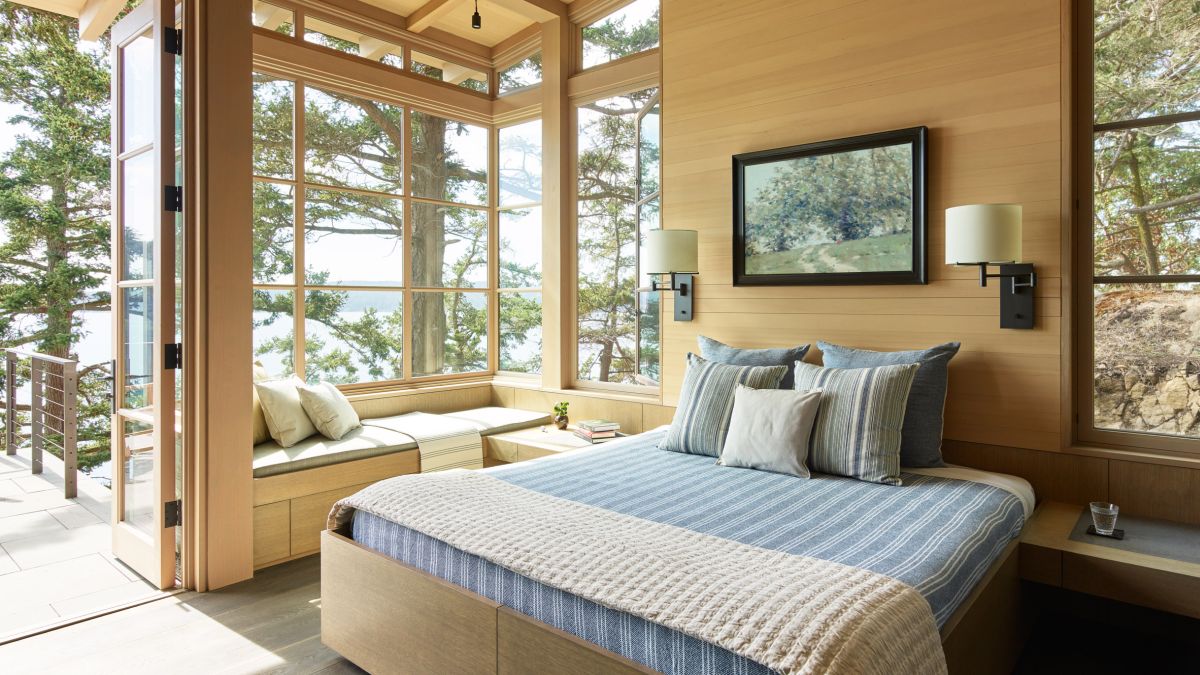
Industrial Materials in a Wyoming Prairie
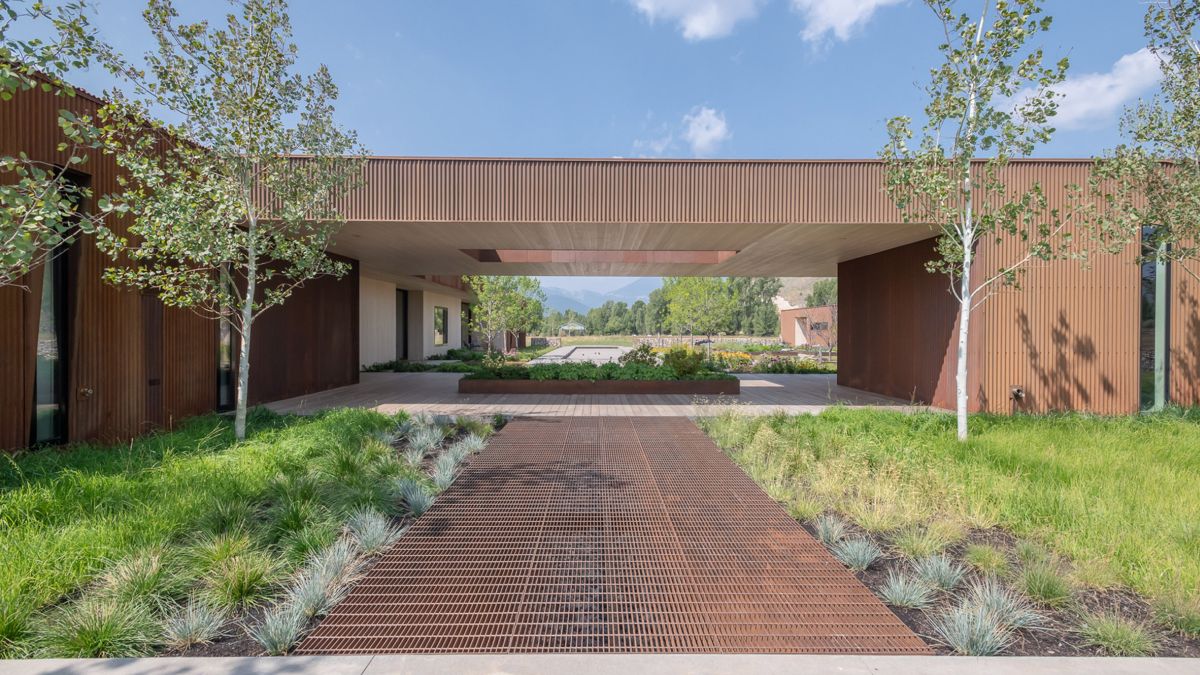
Weathered steel might not sound like the go-to material for a home on the Wyoming Prairie but it helps this American house blend with the landscape in a very unexpected way. Carney Logan Burke Architects designed this home near Jackson Hole for a retired couple on a grassy plain site that is set against buttes and Mount Glory. The modern American house is low-slung and humble, featuring an asymmetrical gabled roof. The exterior is covered with oxidized steel that melds with the rural landscape. The 3,500-square-foot home is connected to the garage by 80-foot-long (24-metre-long) covered terrace. Inside, three zones are focused around the central open-plan living space and kitchen, all done in a neutral color scheme. Both ends of the home have covered patios, expanding their seasonal use. Outdoor features include a firepit, reflecting pool, and bocce court.
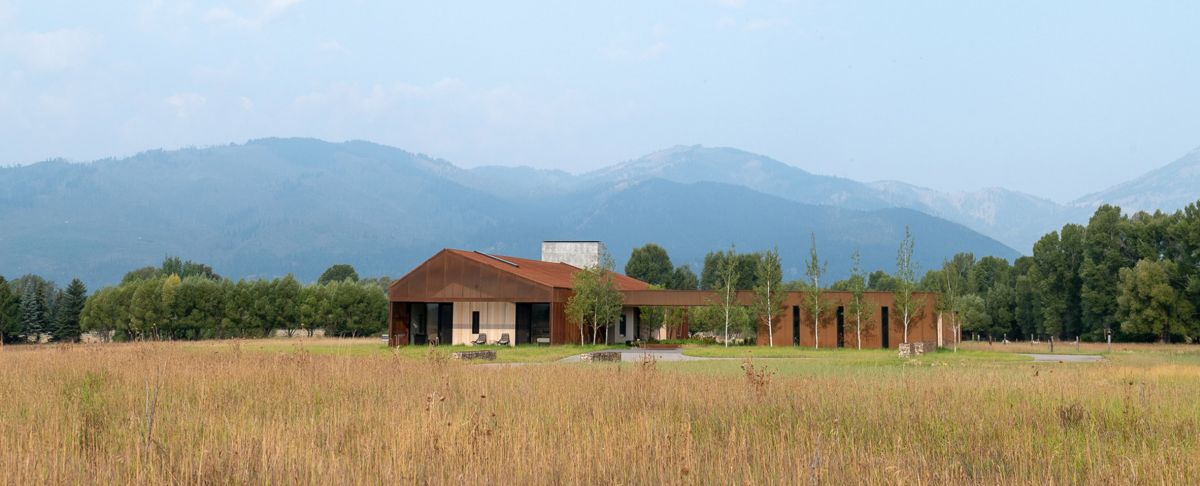
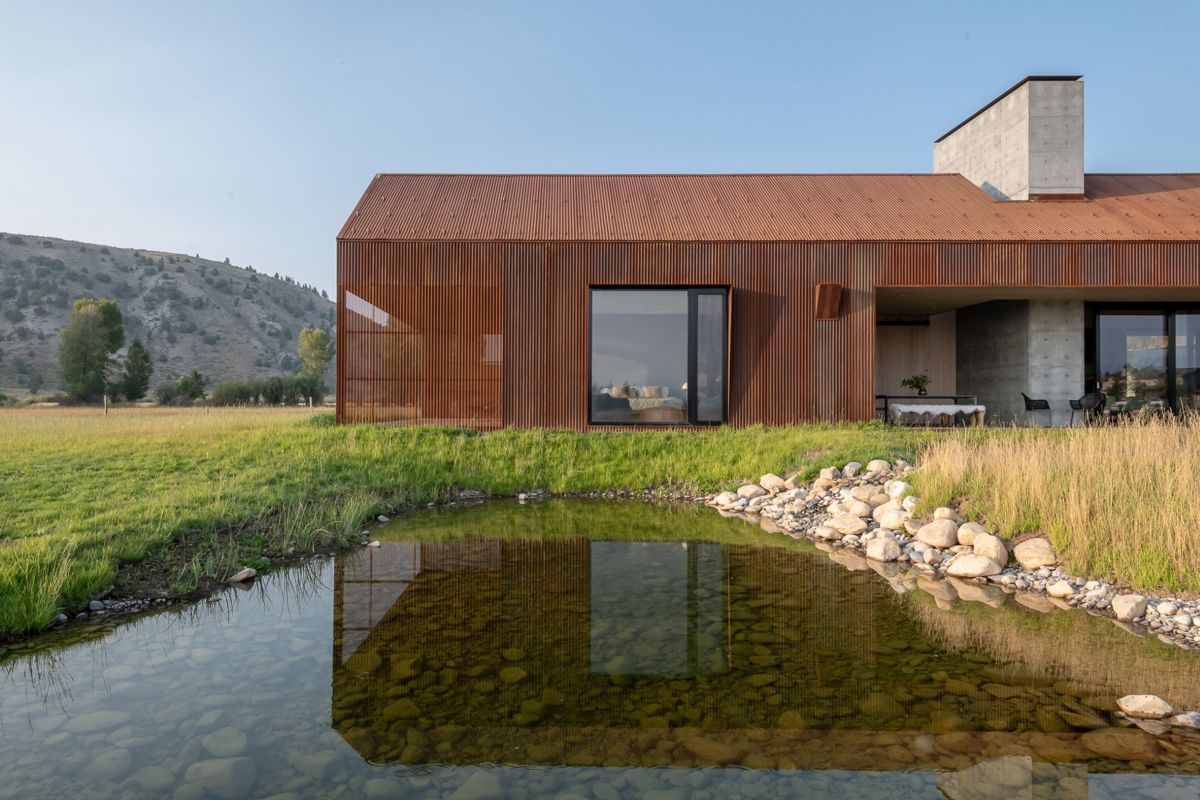
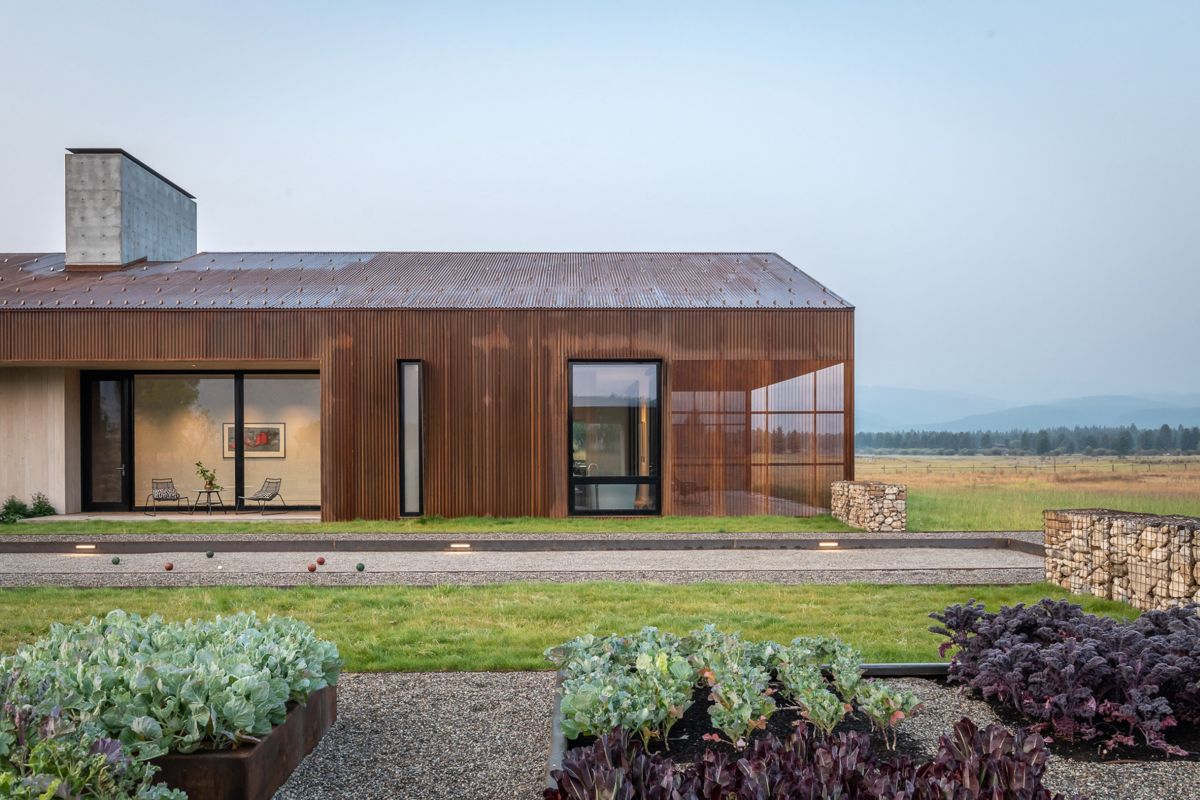
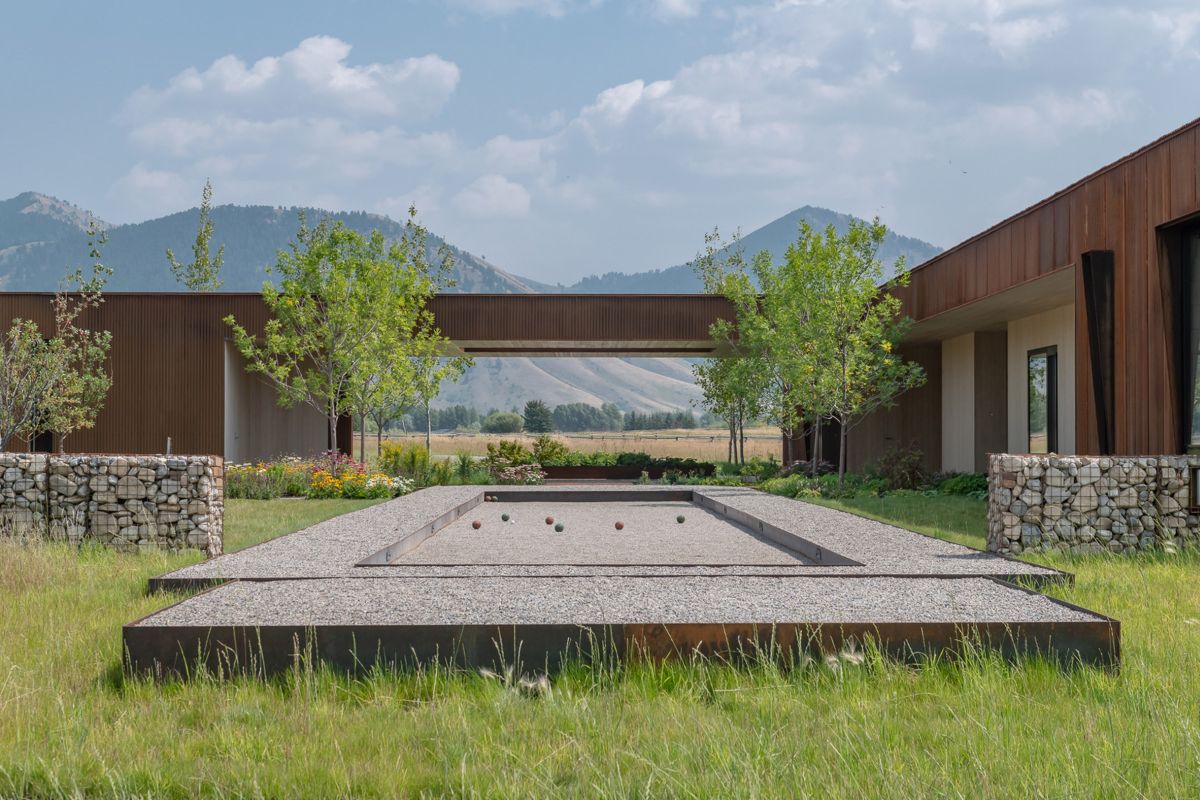
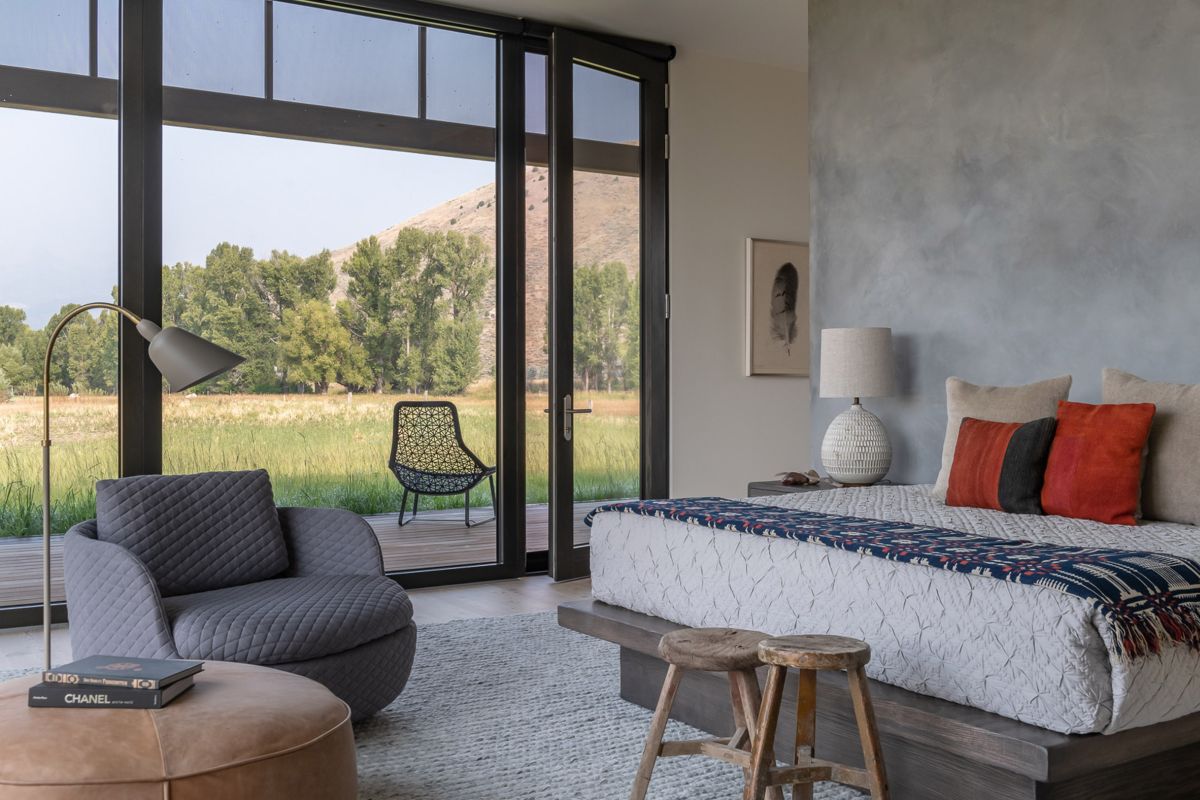
Nature-Focused Long Island Retreat
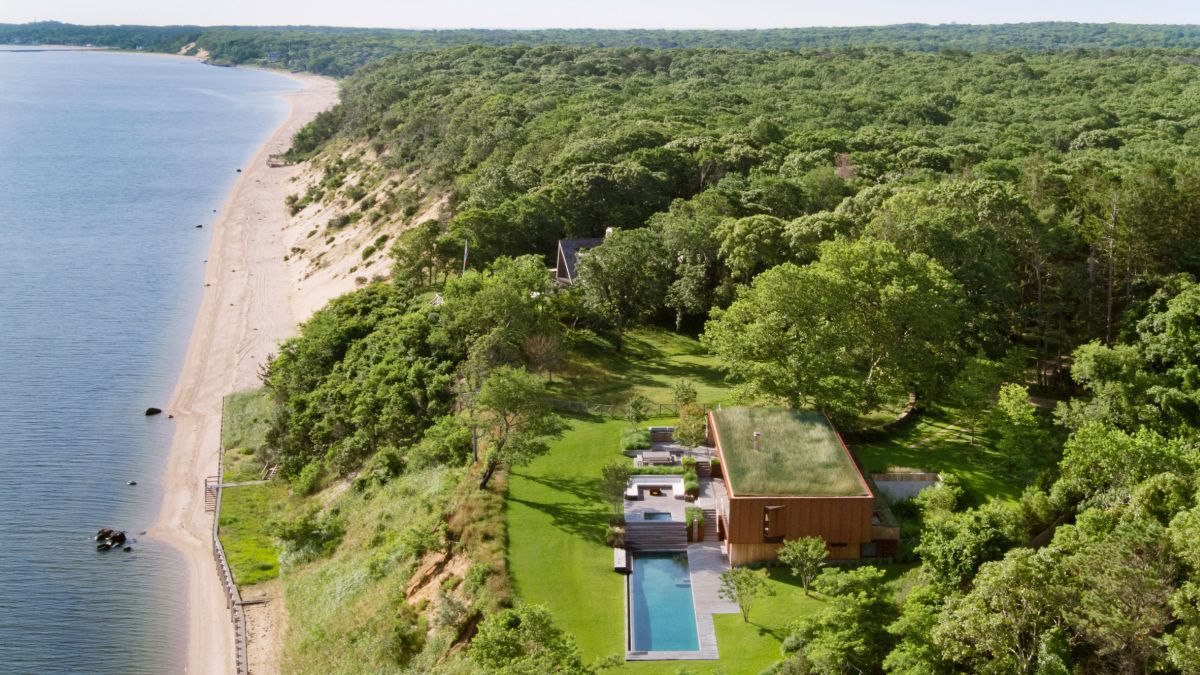
Located on Long Island and facing out across the water, this home is focused on the aesthetics of the landscape by blending in as much as possible. Called Peconic House and designed by Mapos, the structure fits with the historic character of the region and makes the most of the views — both water and woods. Oriented around a great old sycamore tree, the house features a roof that is planted with native meadow grasses to blend in with the landscape and minimize the home’s visual impact on the property. The choice of cedar, concrete, reclaimed ipe wood, and Corten steel for this American home give the exterior a natural feeling. The living space is oriented for an east-west view of Peconic Bay and is done in unfinished cedar and reclaimed white oak, all fronted by a 100-foot-long glass wall.
Bayside Home Made for Entertaining
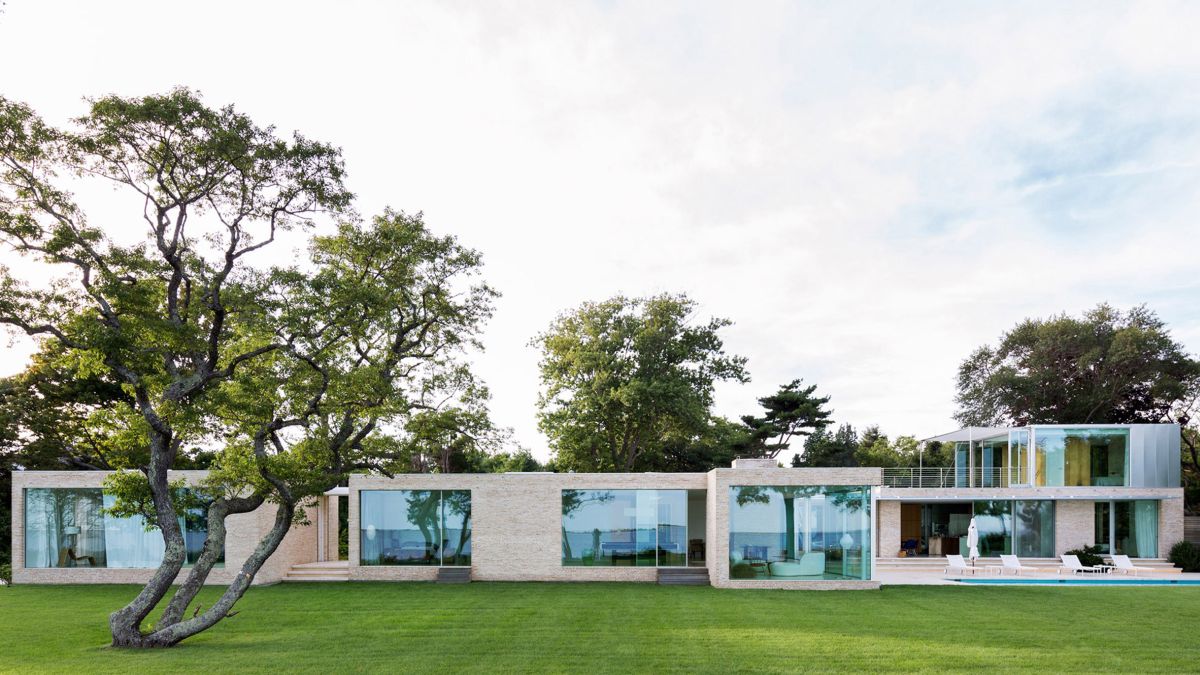
While this home might be designed for entertaining, it is definitely made for durability and easy maintenance. Created by architect Toshihiro Oki of New York, this American home is made built with clay bricks that are ideal for standing up to the region’s salty breezes and the constant freezing and thawing of the winter season. Oki achieved a fluid look by stacking the bricks in a random pattern that allows the earthen slabs to show off their color variations across the facade. The 4,800-square-foot home in Bellport. Long Island is a weekend retreat with plenty of space for entertaining to friends year-round. Separate volumes converge in central point where the main living spaces are located. All of the five bedrooms — four on the main floor and one on the top level — have doors that open to the yard. The entire back of the house is lined with windows and sliding doors that put the landscape and the waterway on full view. The kitchen, which is a separate room, opens to the backyard, which has a swimming pool.
Rising Above the Wetlands
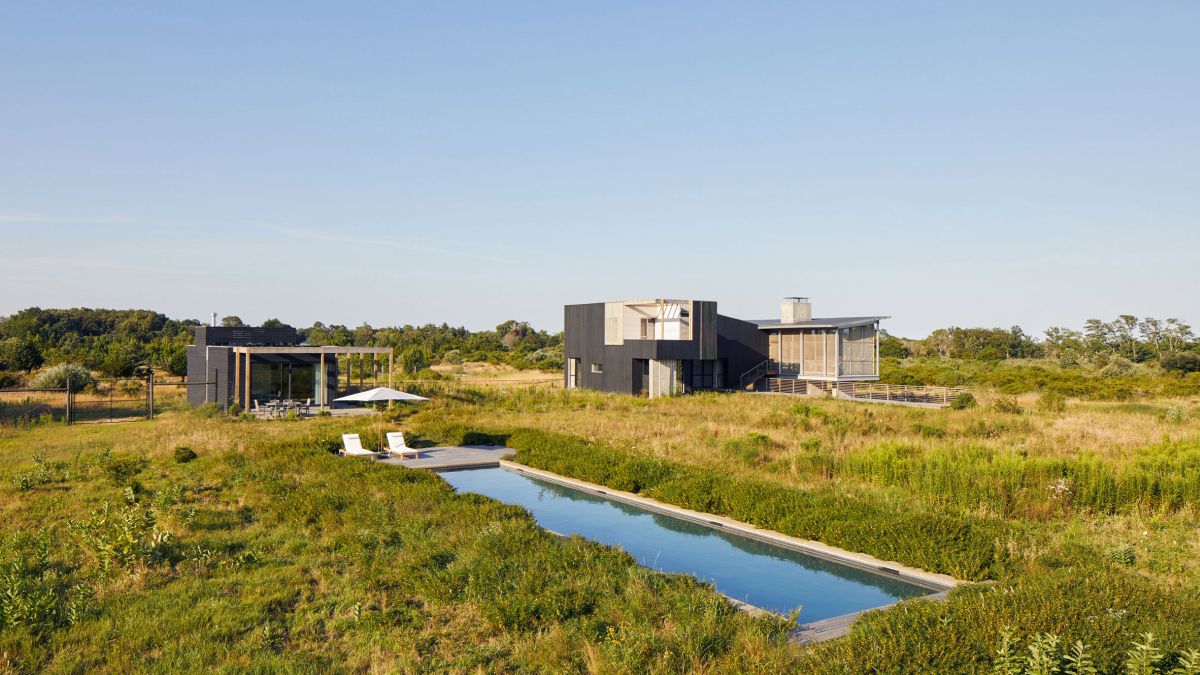
Marshland is not a typical site for building a home, however, the Wetlands House by Ryall Sheridan Architects was constructed on stilts to allow floodwaters to flow underneath without harming the house. Located in Orient at the tip of Long Island on a plot that was once used to grow potatoes, the three-bedroom house is intertwined with the landscape, with the entire property restored to a natural state, cleared of invasive, non-native species. This American house is built with durable materials that can stand up to salt, wind and coastal flooding and each facade feature a different aesthetic and the east side has a glass wall. The elevation of the house also gives owners sweeping views of the Peconic Bay wetlands. Inside, natural materials and a subdued color palette create a serene space, while the entire building follows Passivhaus standards. A second, detached building houses the garage and cabin, while a saltwater swimming pool is the main outdoor amenity.
Woodland Hamptons Hideaway
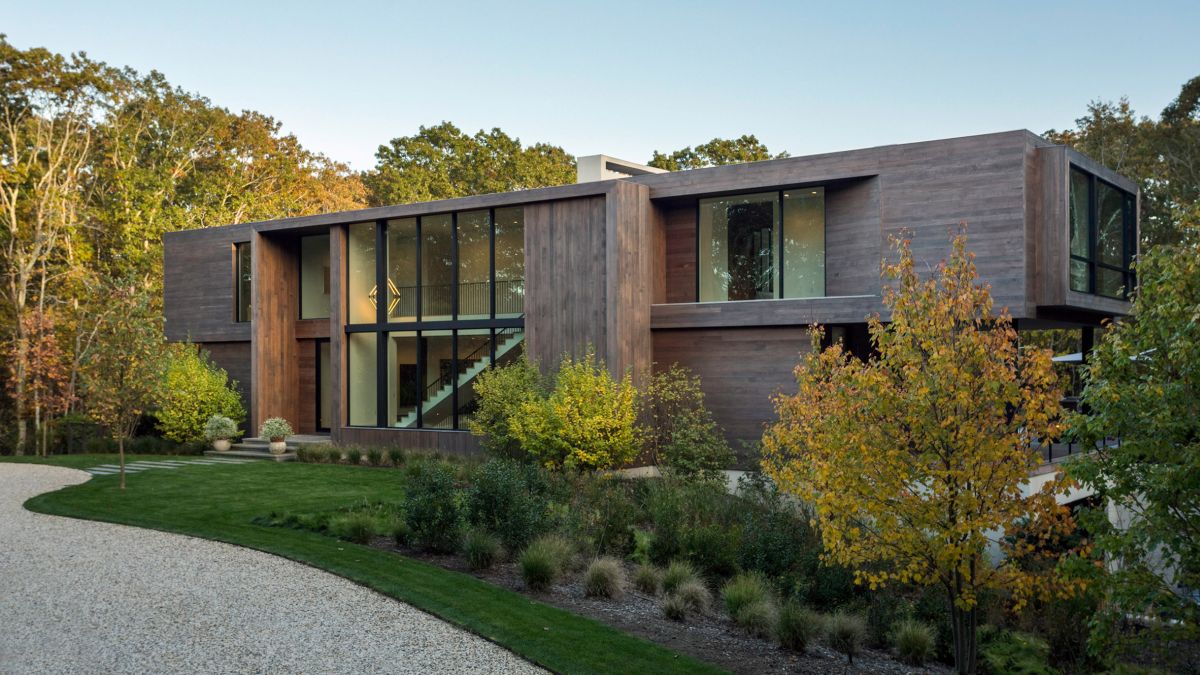
Unlike many homes Southampton, this residence on Old Sag Harbor Road is focused on the forest instead of the water. Created by Blaze Makoid Architecture, the large 7,100-square-foot residence is secreted in a pristine location. To minimize the footprint of the house, it is shaped like a T, with the upper section slightly cantilevered. The exterior is clad in cedar and it features plenty of glass so that those inside can enjoy expansive views of the wooded surroundings. Throughout the interior, walnut was used to infuse a sense of warmth. All main living areas are on the ground floor, and the private bedroom areas are on the upper level. To enhance the homeowners’ love of entertaining, a large glass wall slides open to the pool, creating an expansive area for parties and gatherings. The spacious basement has numerous amenities including a game room and climate-controlled wine cellar.
Modern Farmhouse in Wine Country
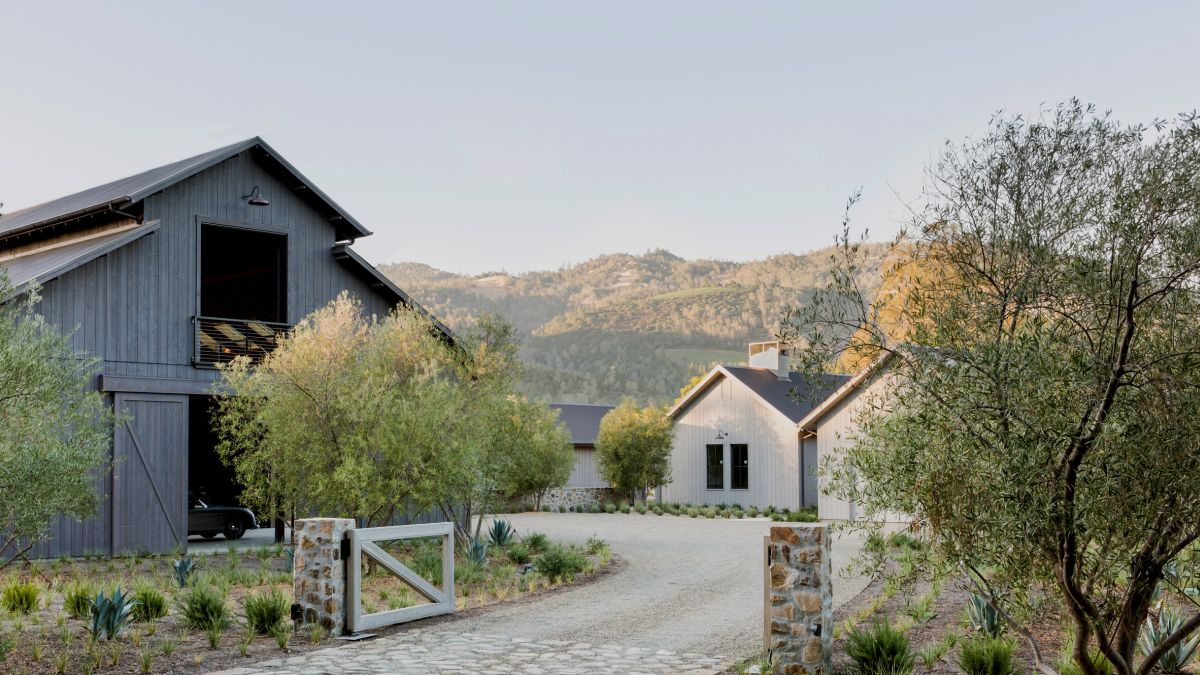
Sited between expanses of vineyards and the mountains, this Napa Valley home in Calistoga, California is more like a small compound with four buildings. Designed by Wade Design Architects and Geremia Design, the wooden residence has a “modern farmhouse architecture” that informs the main residence, guesthouse, pool house and garage building with attached pilates studio. The structures are gabled buildings that surround courtyards and terraces, all oriented to the scenic landscape to the north of the property. The main house features a sheltered patio and all of the doors and windows open to the landscape. The interiors of this American house are light and ethereal, allowing the air and the outdoors to flow through the space. Most of the pale-toned rooms have white walls, tile flooring and contrasting black window frames.
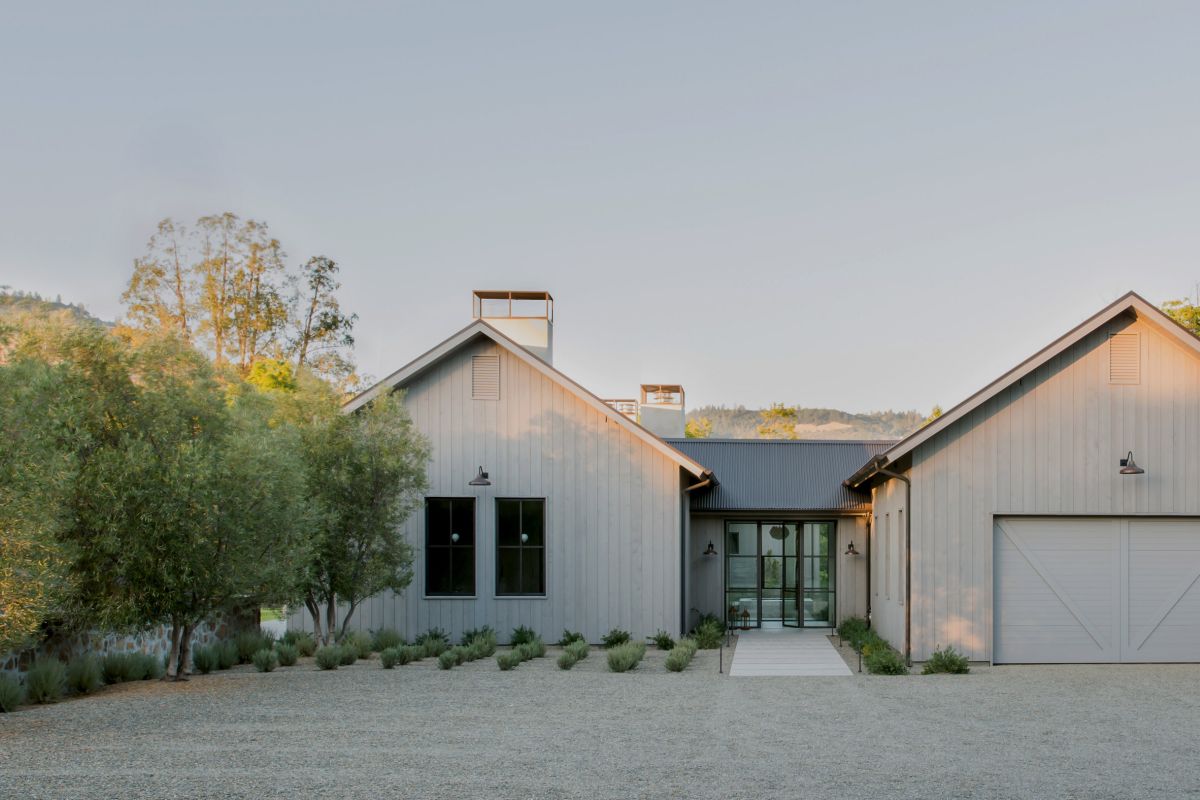
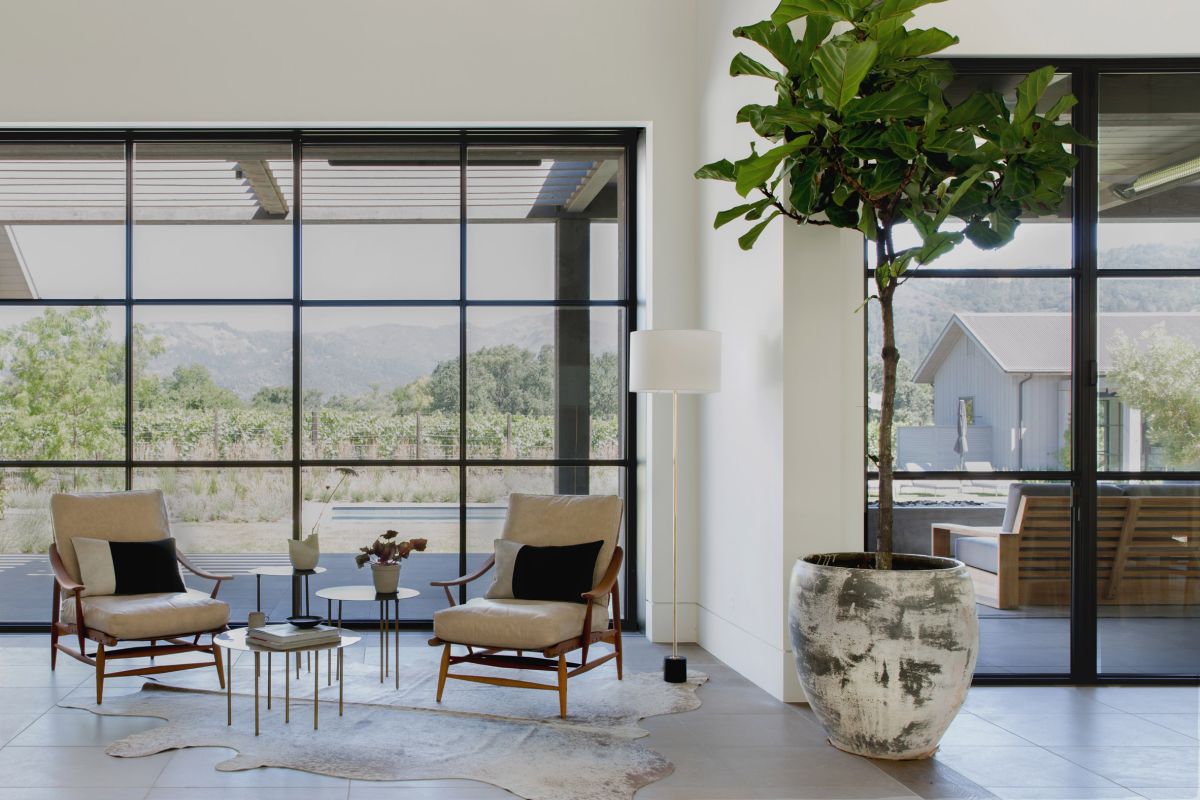
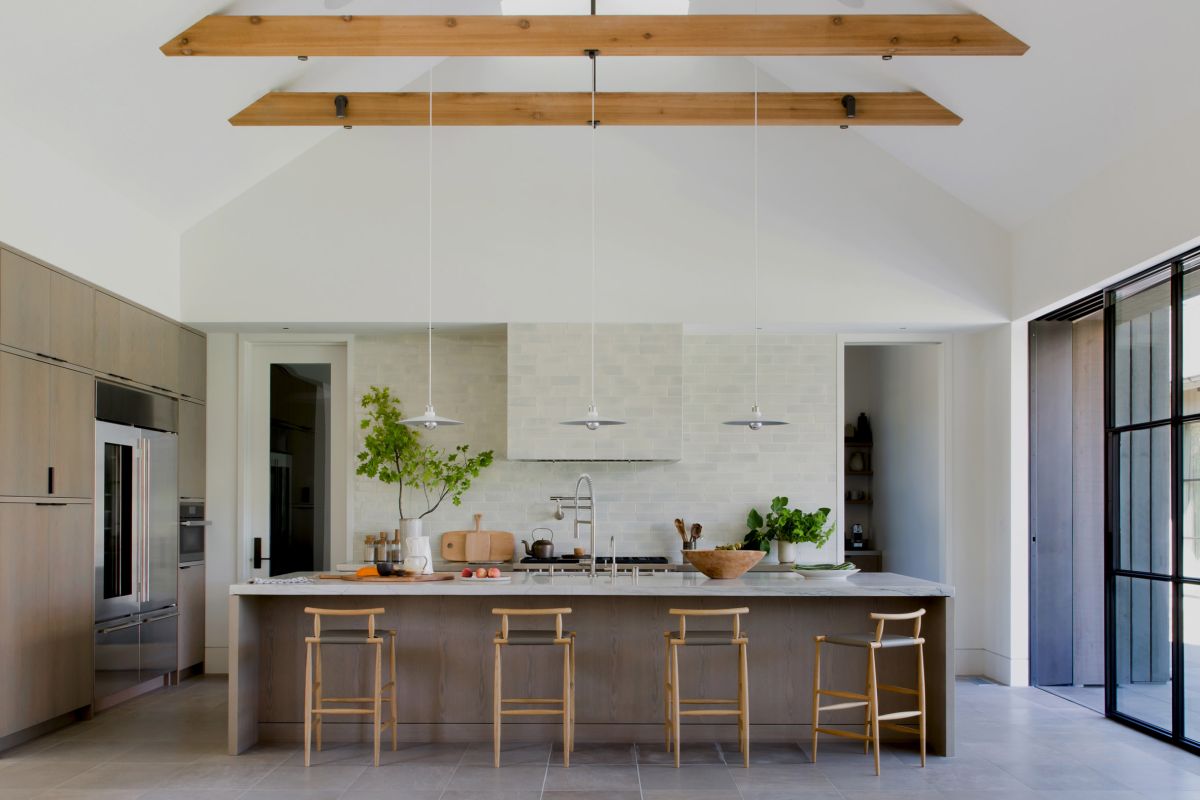
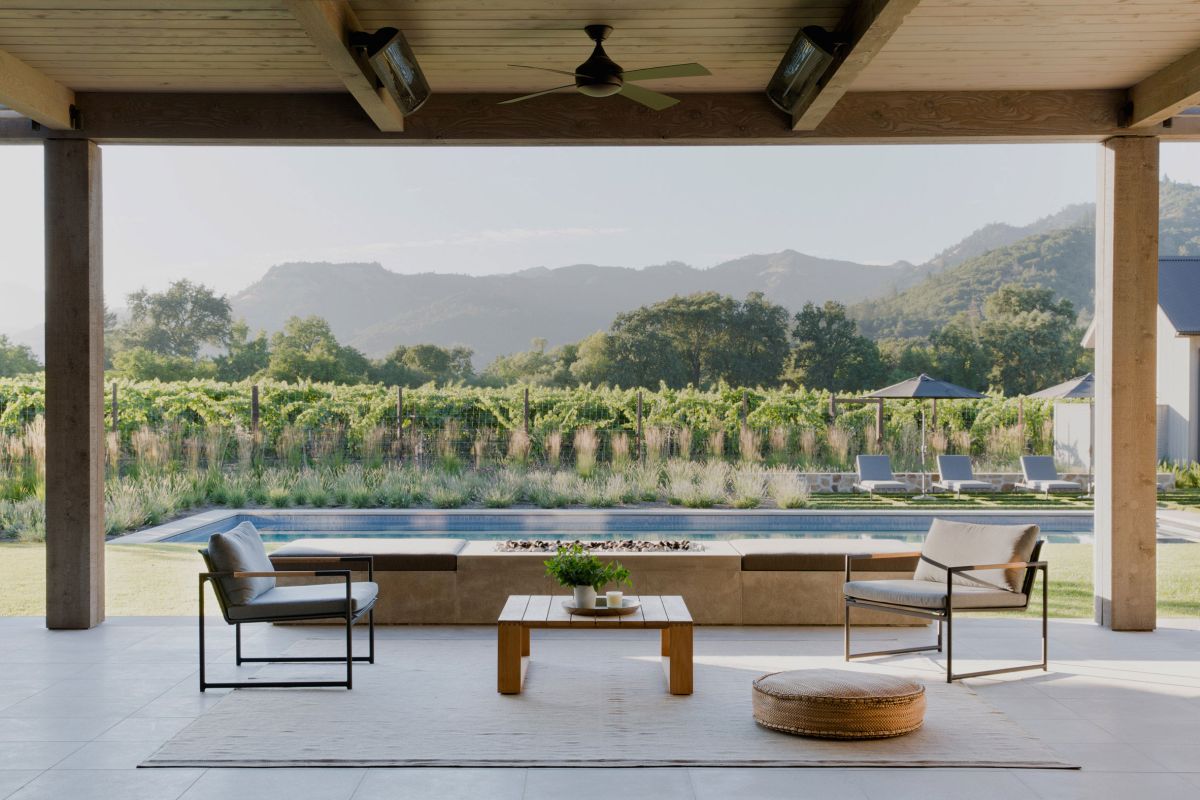
Artful Island Retreat
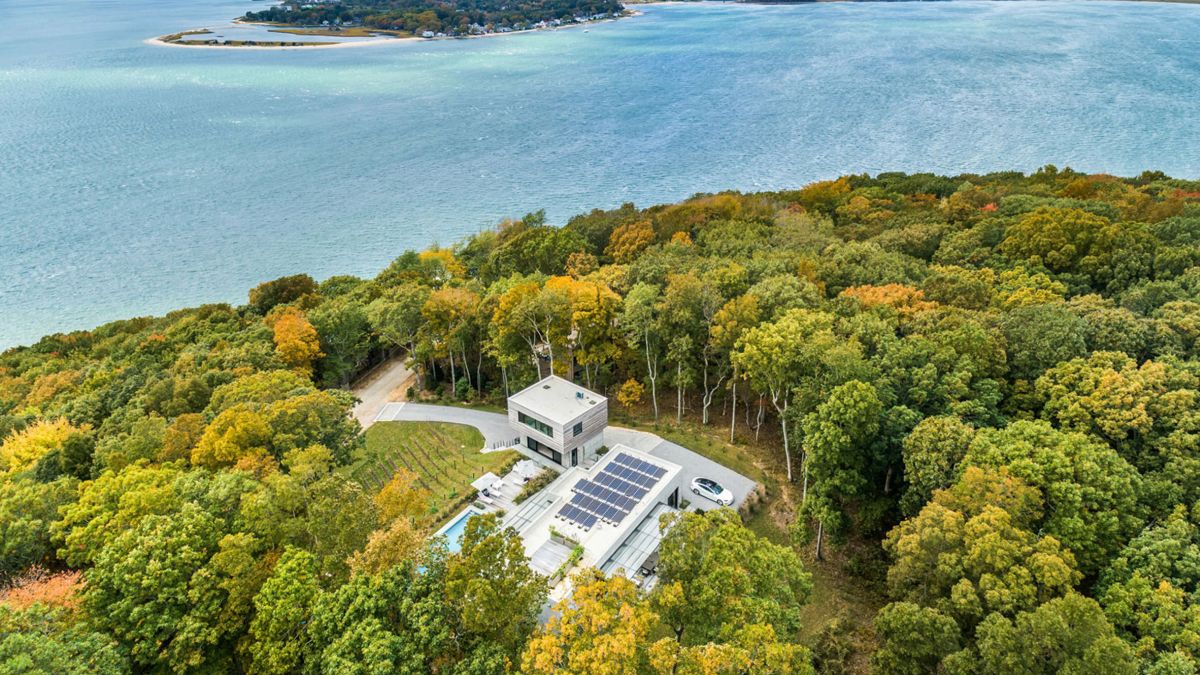
More than just a modern American house, this home on New York’s Shelter Island features a micro-vineyard and rooftop garden — along with all the features that would be expected in a retreat. Eco House was designed by Vibeke Lichten and is located on an island between the North and South Forks of Long Island. Nestled into a forest clearing, the home is a nature retreat located on a slope above the beach. The main residence and detached pool house are built from concrete for durability and easy maintenance but includes cedar boards on the upper portion of the pool house to blend with the landscape. Passive design features increase the h0me’s energy efficiency while sliding glass doors allow for plentiful light and airflow. The interior is also primarily concrete — with raw concrete walls and polished concrete flooring — punctuated by artworks created by the homeowner architect and other family members.
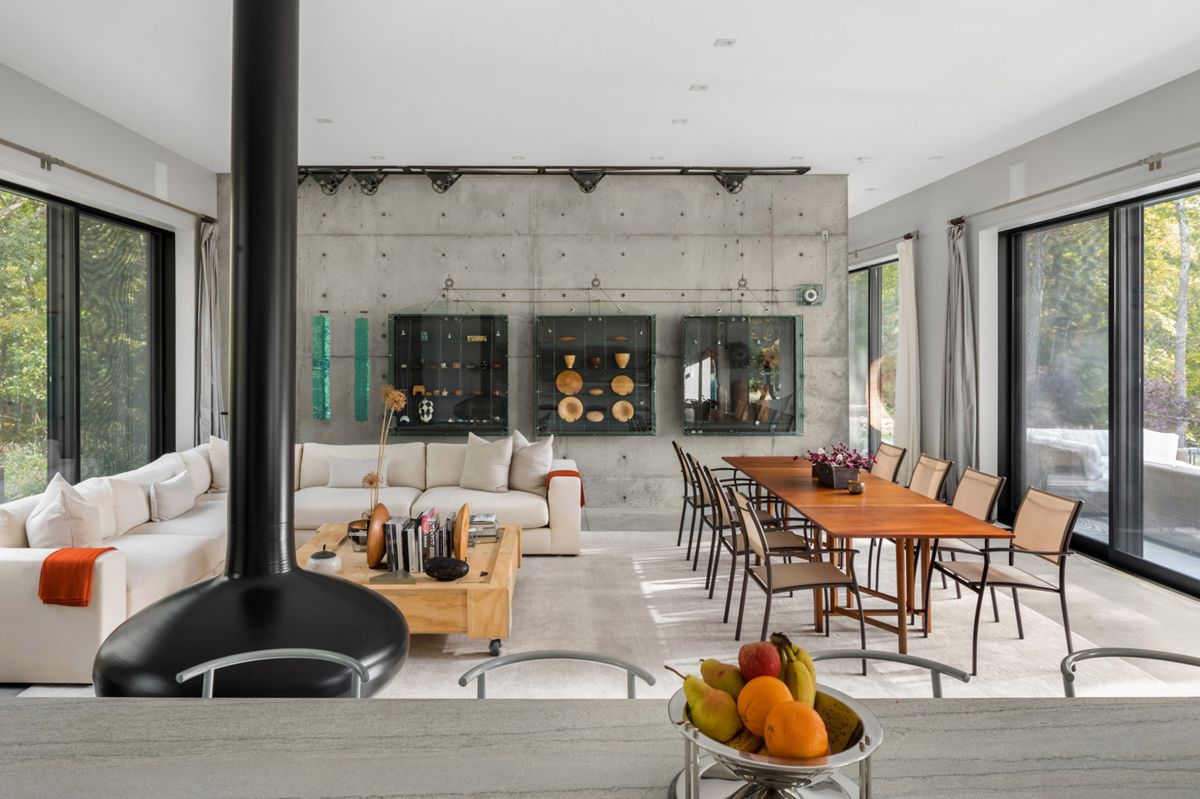
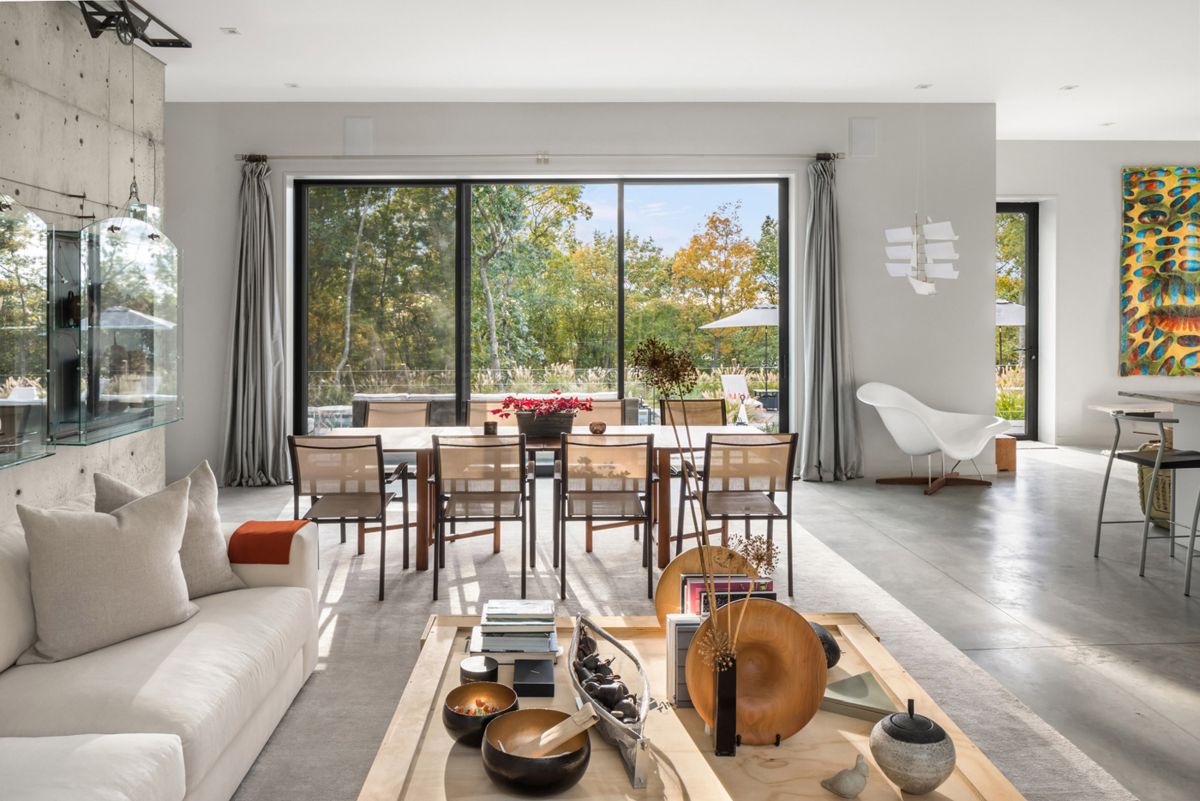
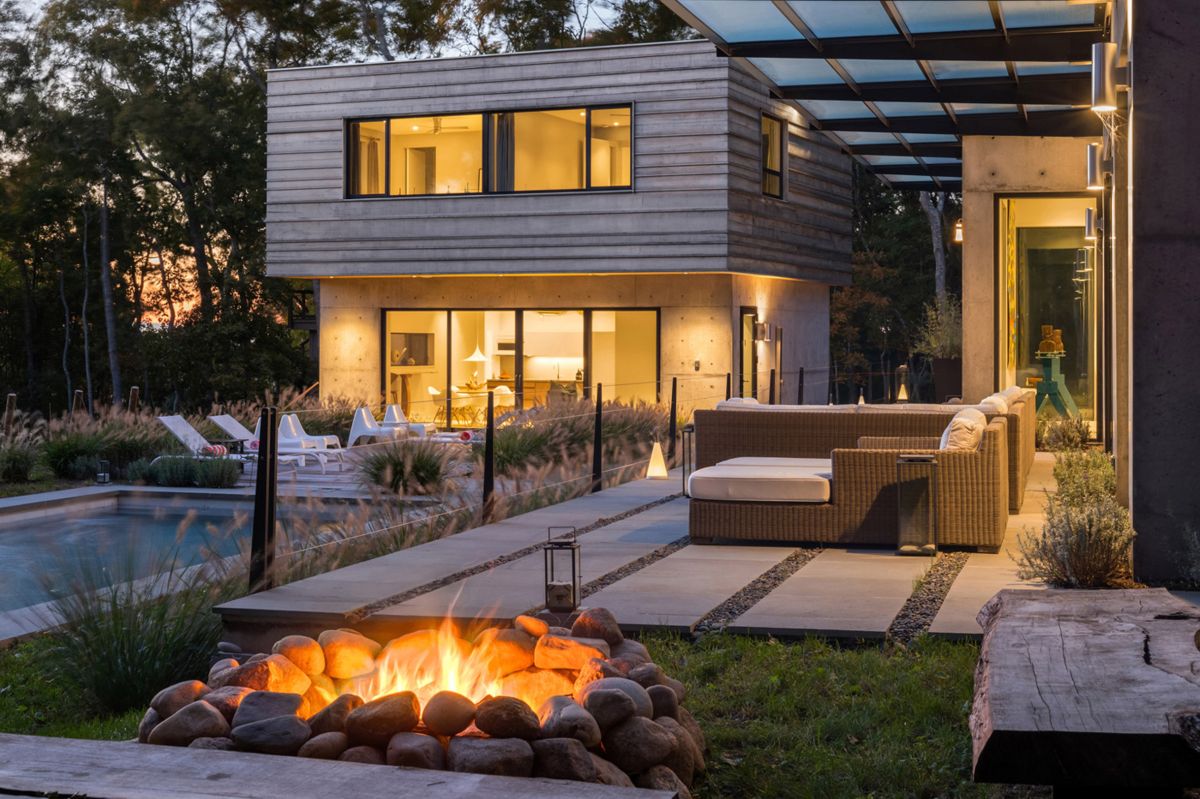
Modern Volumes in a Mixed-Use Area
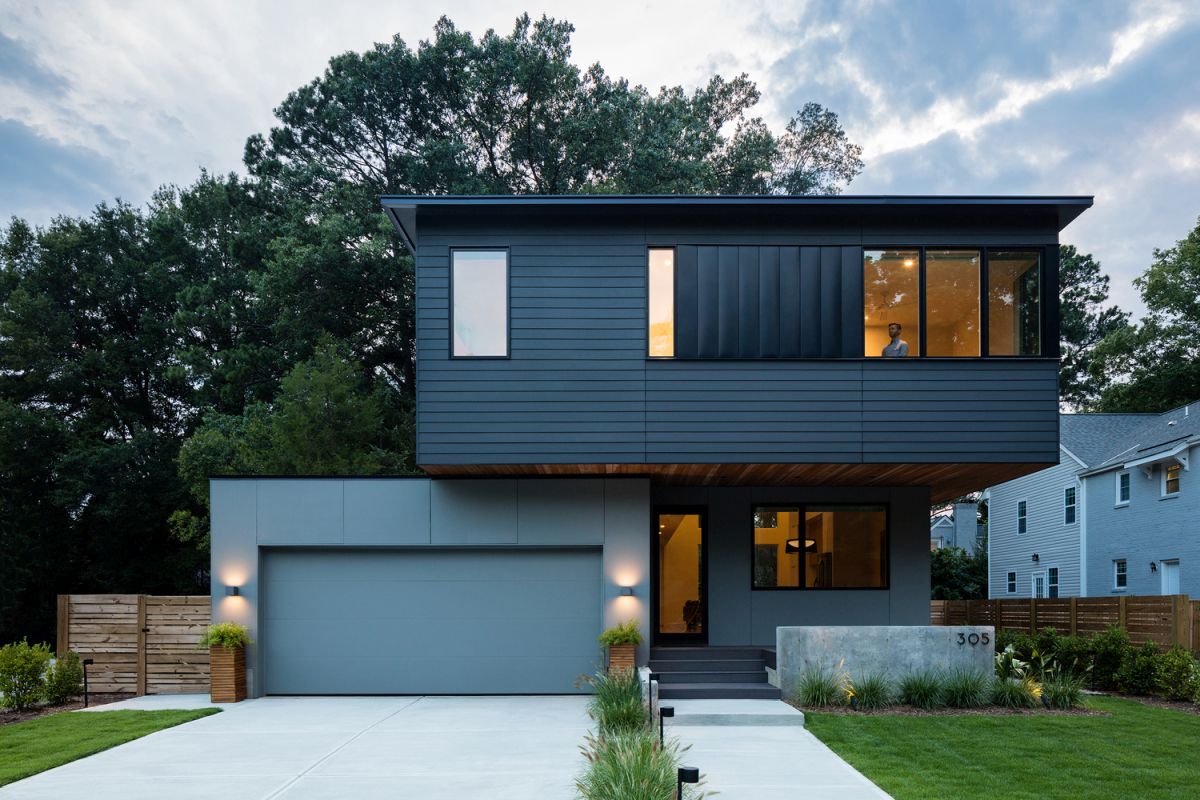
Not every American house can be located in the forest or on the shore, and many neighborhoods are mixed-use residential/commercial zones. This home’s modern and edgy design by The Raleigh Architecture Co. helps provide the homeowners with privacy from a parking lot on the north side. A central wall divides the upstairs bedrooms from a double-height living room. The space features skylights that bring in plenty of natural light since the design avoids windows on the wall against the neighbors. By using separate volumes, the architects were able to create a spacious residence with a small footprint that has lots of style, function and privacy.
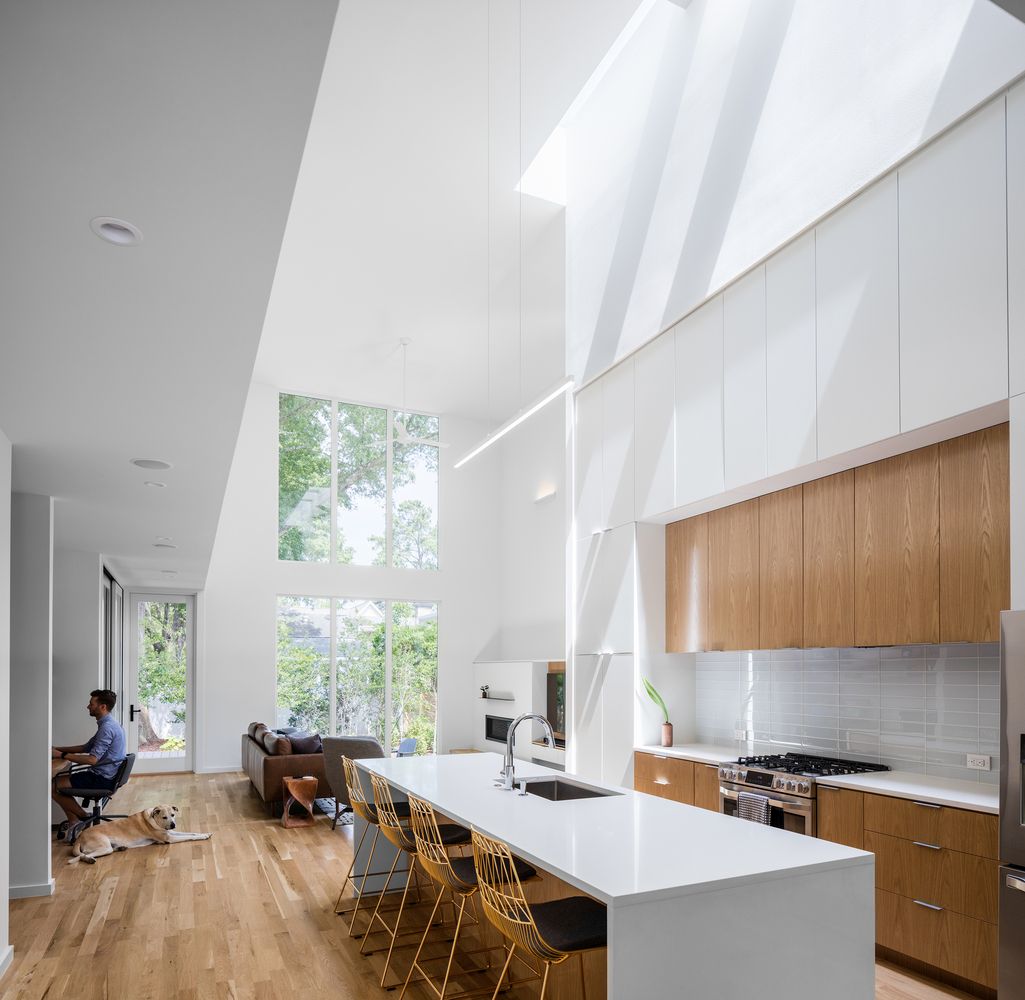
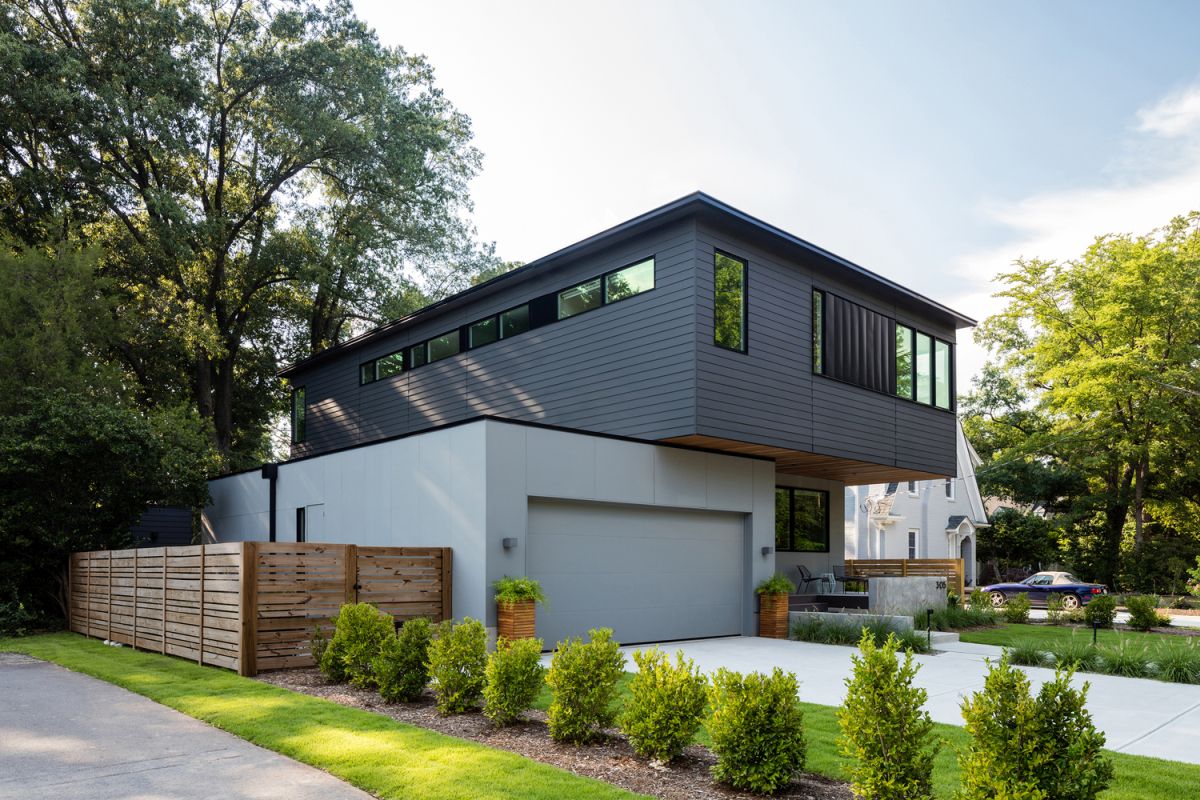
Restored Northwestern Midcentury Ranch
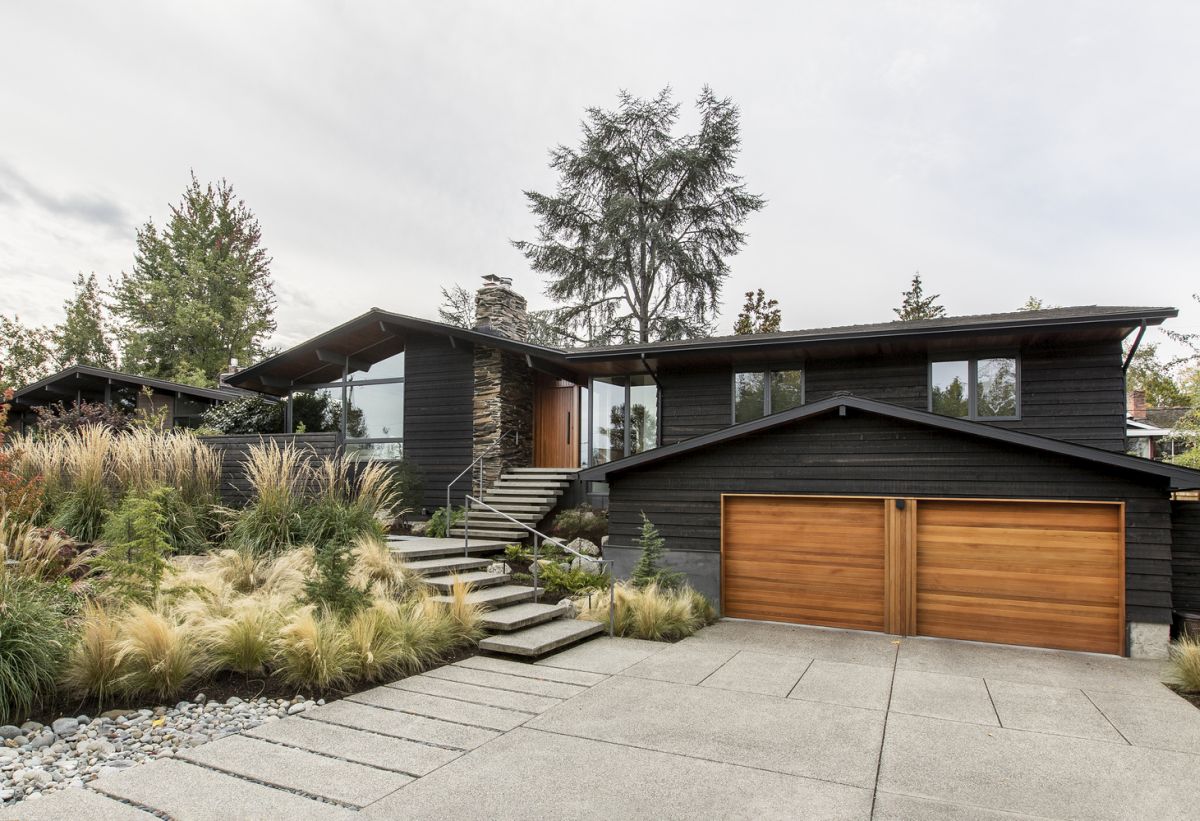
After decades of ill-conceived renovations, this 1959 midcentury ranch house was revitalized by SHED Architecture & Design. The resulting fully refashioned Seattle residence is an American house with contemporary flair, good flow and an aesthetic that honors the original spirit. The exterior features a stone chimney, fir decking, and landscaping focused on native plantings. Inside, skylights bring in natural light for an airy and comfortable space. An expansive kitchen area that encourages lingering faces the deck and backyard, linked by large glass doors that slide open. The large deck leads down to a patio with firepit area, expanding the use of the backyard.
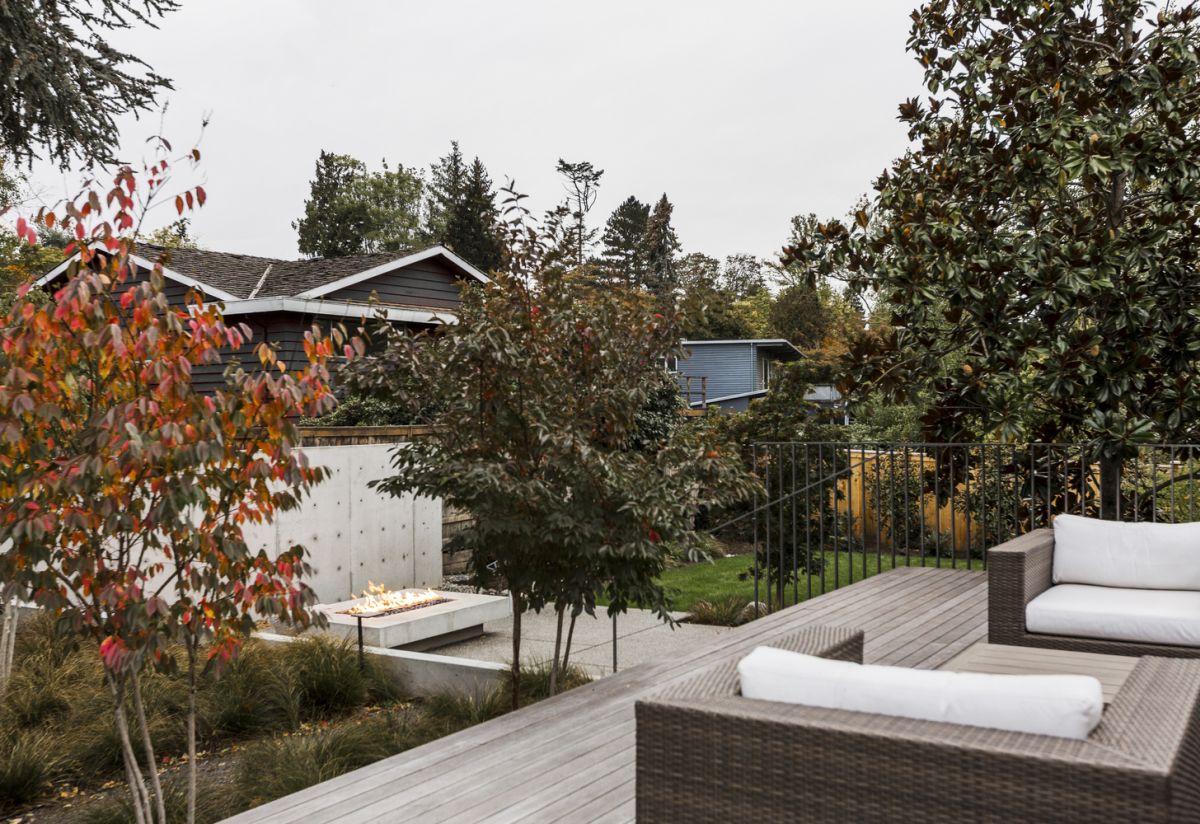
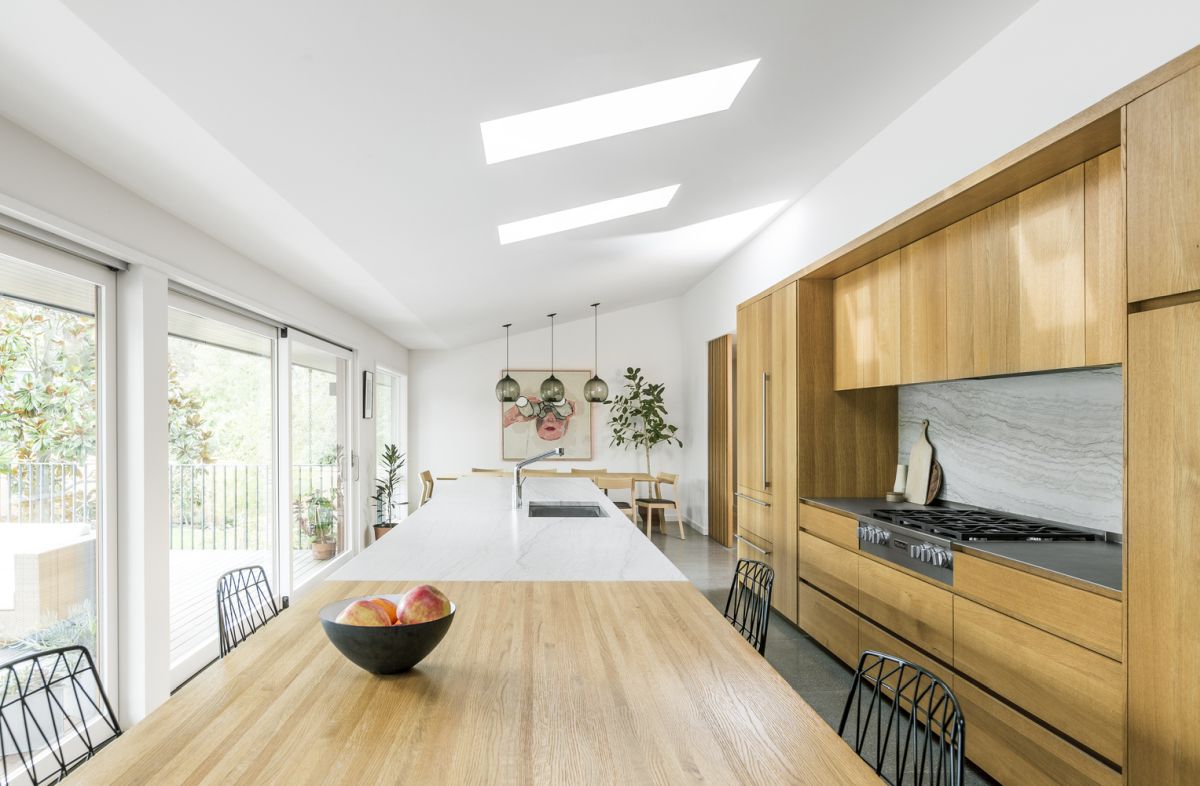
Not Your Mother’s Split Level House
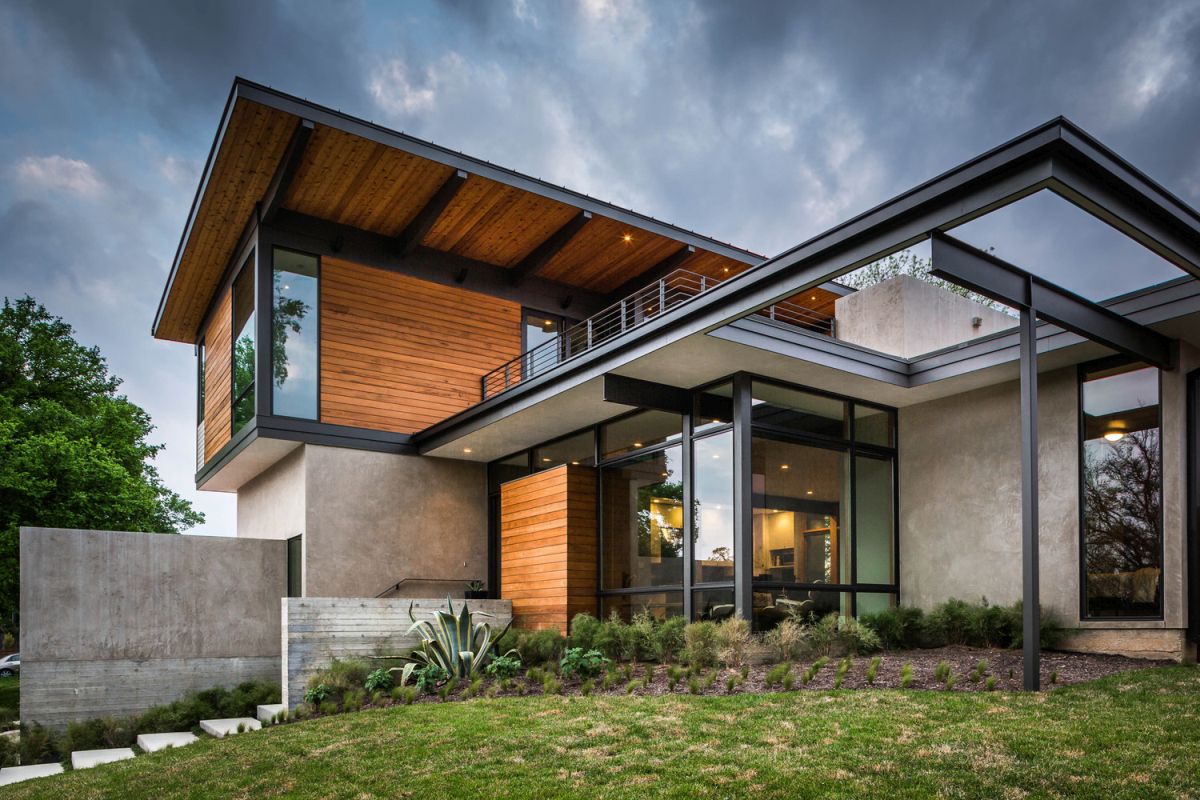
Say “split-level” and most people think “dated” but this Austin, Texas home shows how stylish the new version of this concept can be. Designed by A Parallel Architecture, this American house is set into the top edge of a steep hill, offering panoramic views of the surrounding hill country. Working with the slope, the house is sunken into the hill with parking on the lower level and living spaces in the upper levels. Juxtaposing the various sections of the house allowed designers to focus on the views while still providing privacy from the street. The home consolidates public spaces on the second level, bedrooms on the third, and a spacious master suite, lounge and roof deck at the top. The weighty concrete base of the home is topped with dominant glulam beams — which are made of laminated wood and are stronger than steel — and plenty of glass, as well as wood.
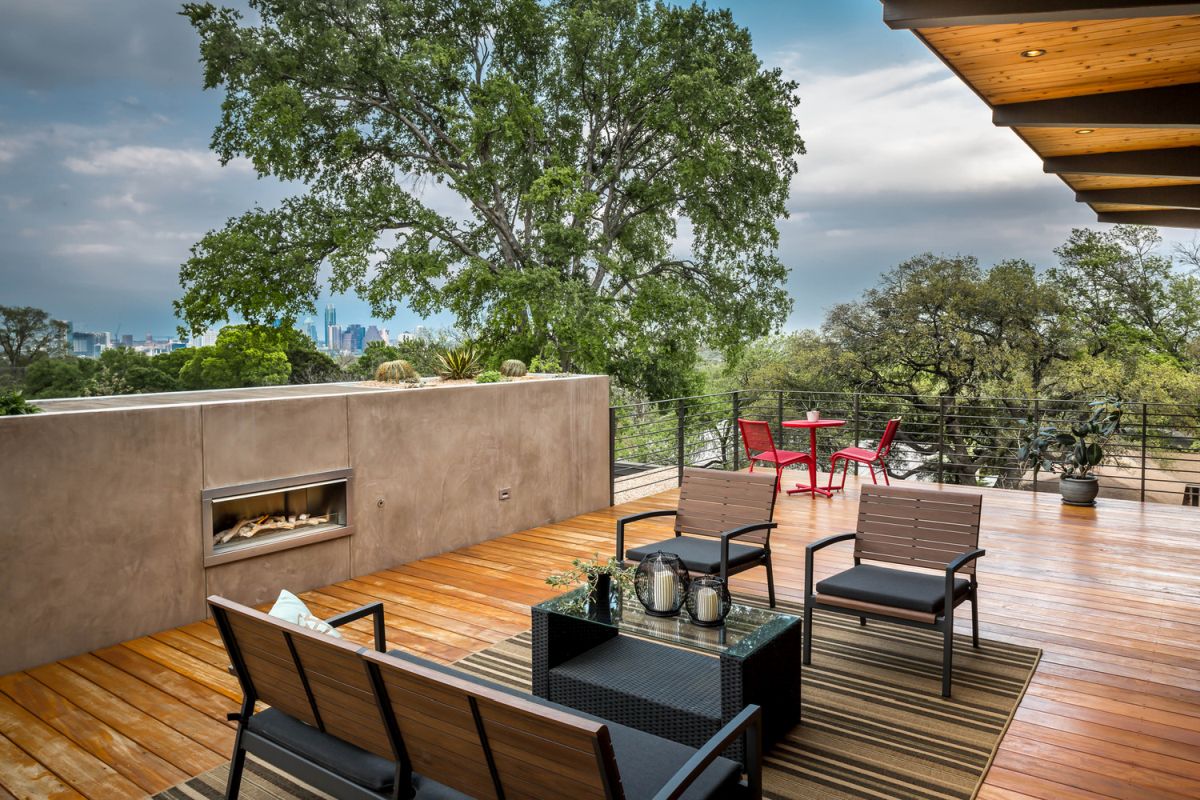
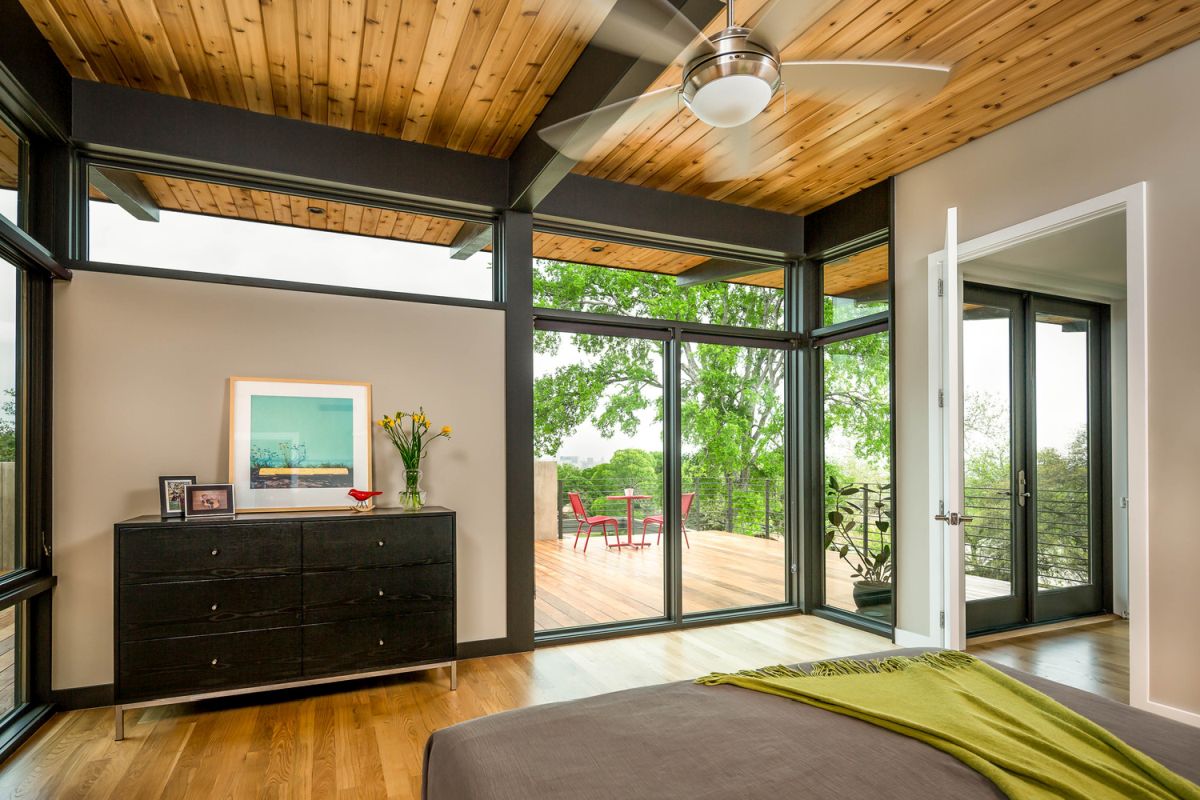
Lakeside Assembly of Structures
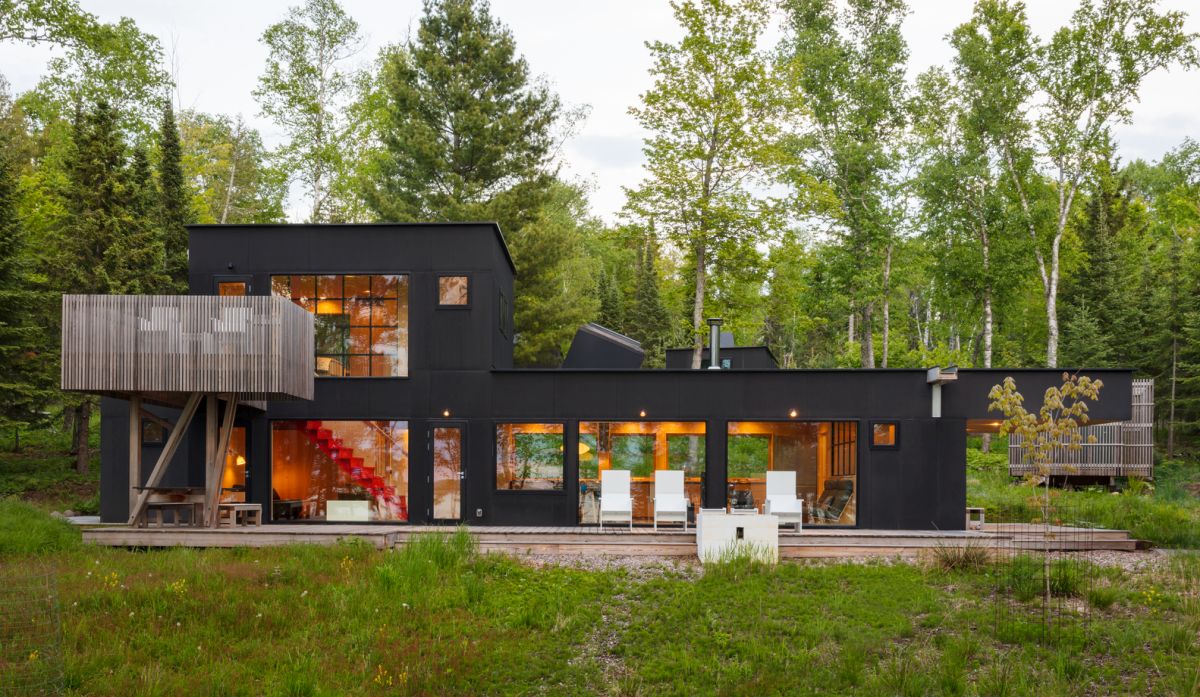
A former Wisconsin logging area has been transformed into an easy-care lakeside retreat that is more an assembly of structures than just the typical American house. Designed by Salmela Architect for a semi-retired couple, the compound is a work in progress for the design-curious homeowners. Fronted by two new outbuildings that frame the path down the hill, the lane leads to a number of structures, including a glass-roofed outhouse and cedar-slatted outdoor shower. The main building is a two-level structure with plenty of glass, natural aging cedar and black Richlite — a material made from paper resin— along with a long deck facing the lake. The living space is on the main level, with a red staircase that separates the upper and lower bedrooms. The lower bedroom features an attached sauna with deck access while the upper-level bedroom features a private deck.
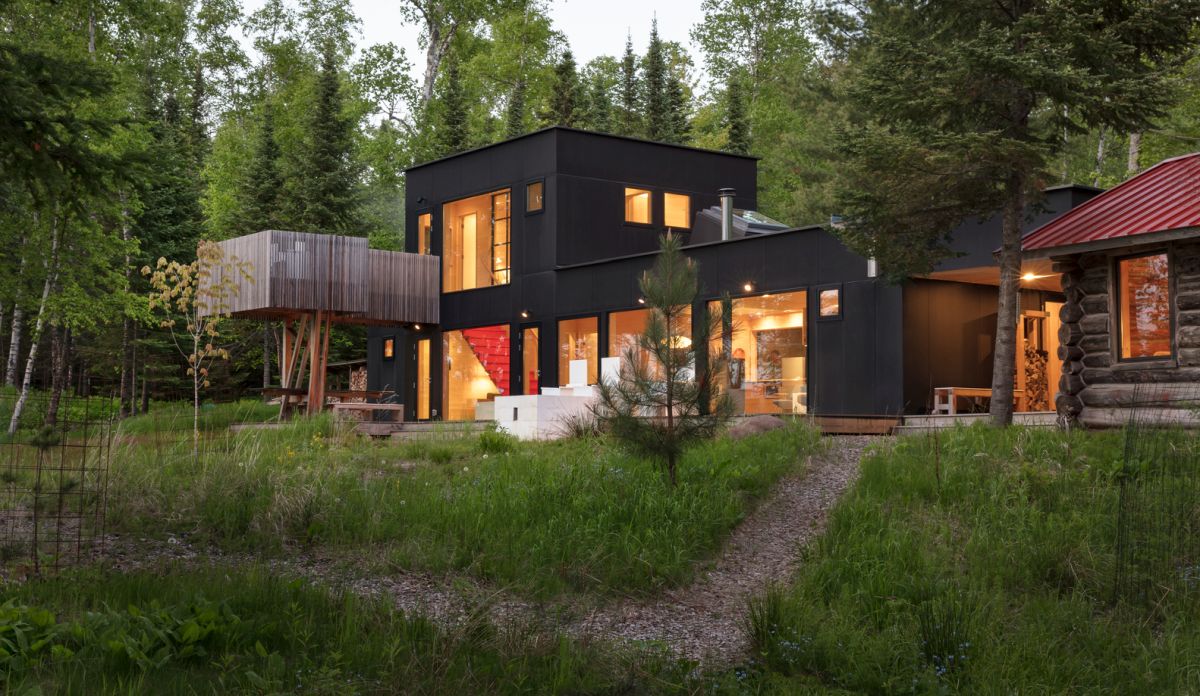

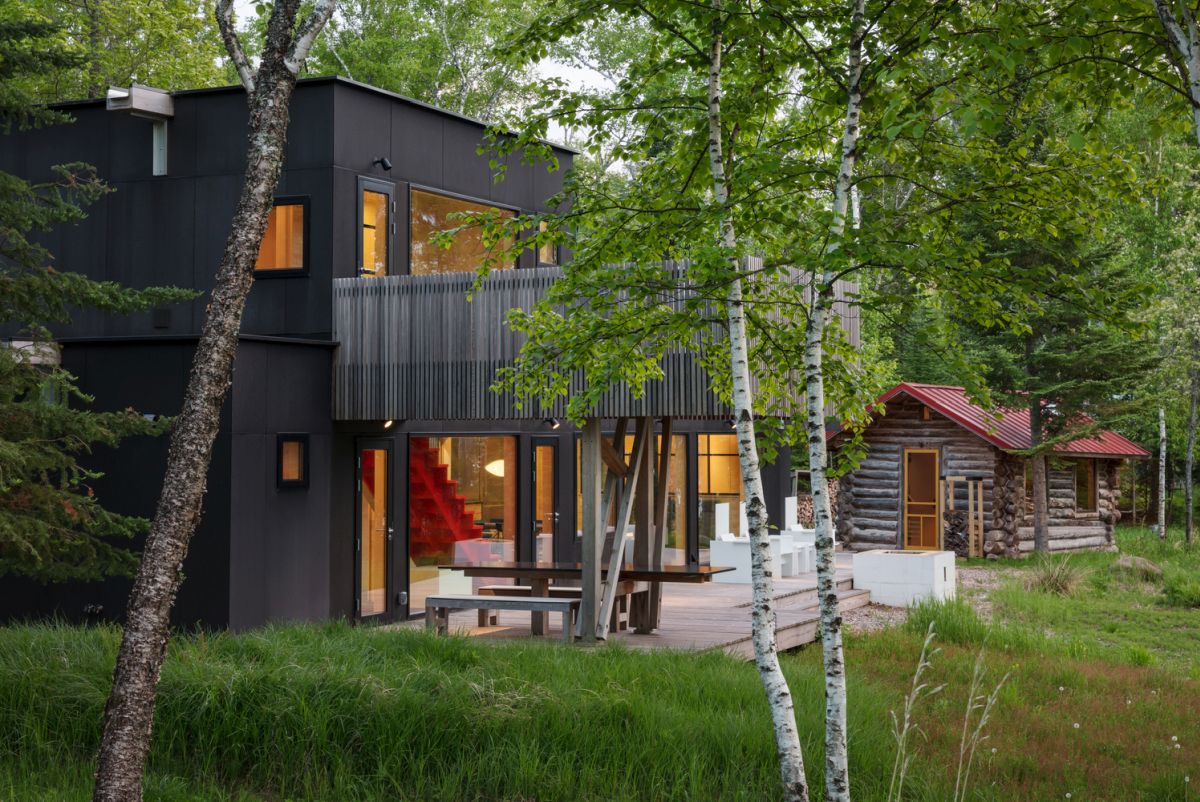
Re-envisioned Suburban Colonial
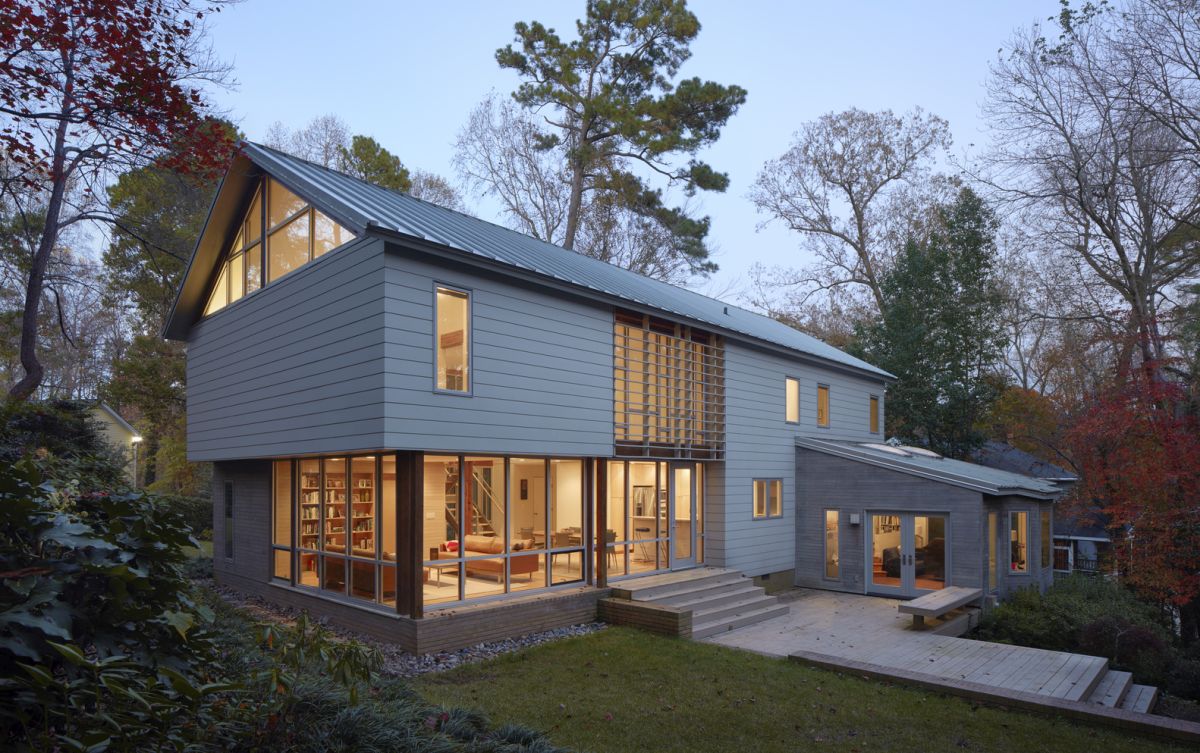
A far cry from the typical suburban colonial American house, this re-envisioned residence in Raleigh, North Carolina is a light-filled beauty. Don Kranbuehl renewed the boxy, closed-off building into an airy residence that has expansive views of the new terraced gardens and landscaping, important to the homeowners who love gardening. The two-story home is more transparent and connected to the outdoors than most. The Architect achieved this by demolishing a one-car garage to open the sightlines to the north and south. A new master bedroom was created that extends slightly into the garden and is separated from the original structure by a large glass window with louvers. The entire exterior — both old and new — is wrapped in a new fiber cement material. Two separate spaces — an existing playroom addition and a new storage/workroom area, that extend from the main structure are finished in local Atlantic white cedar.
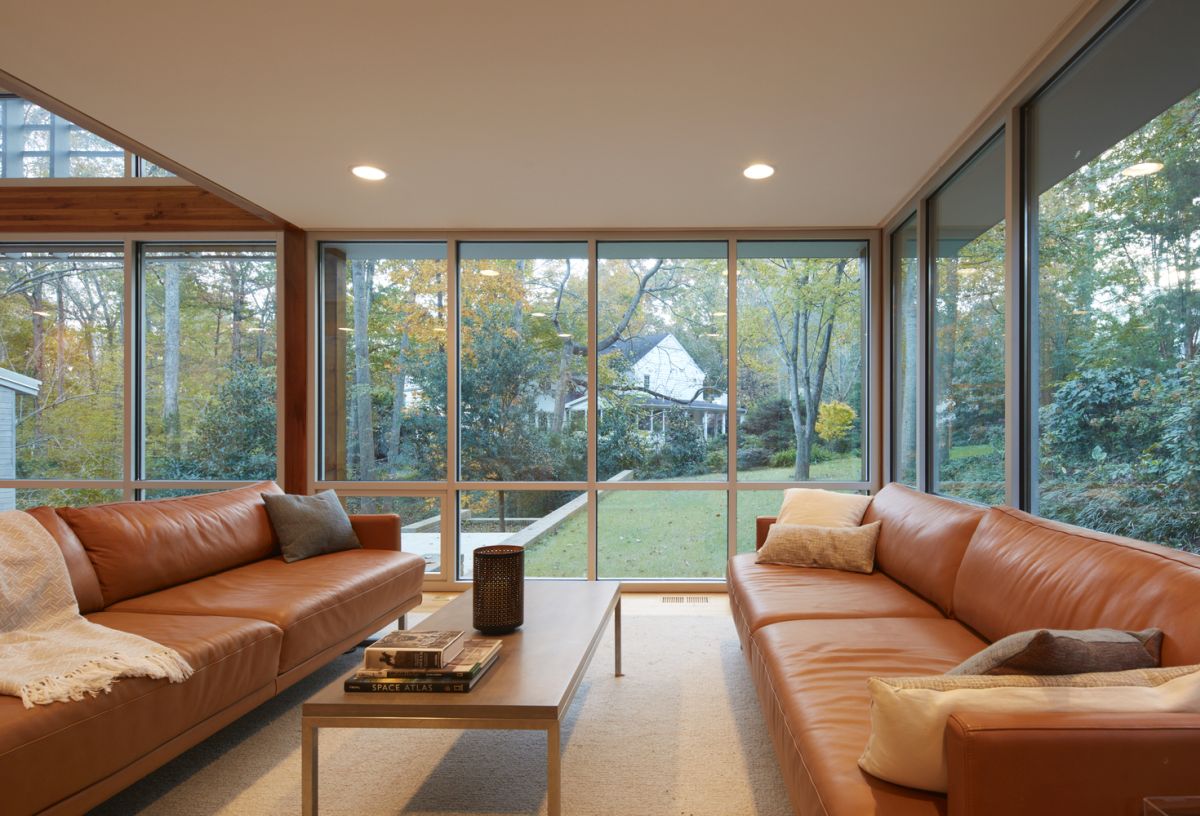
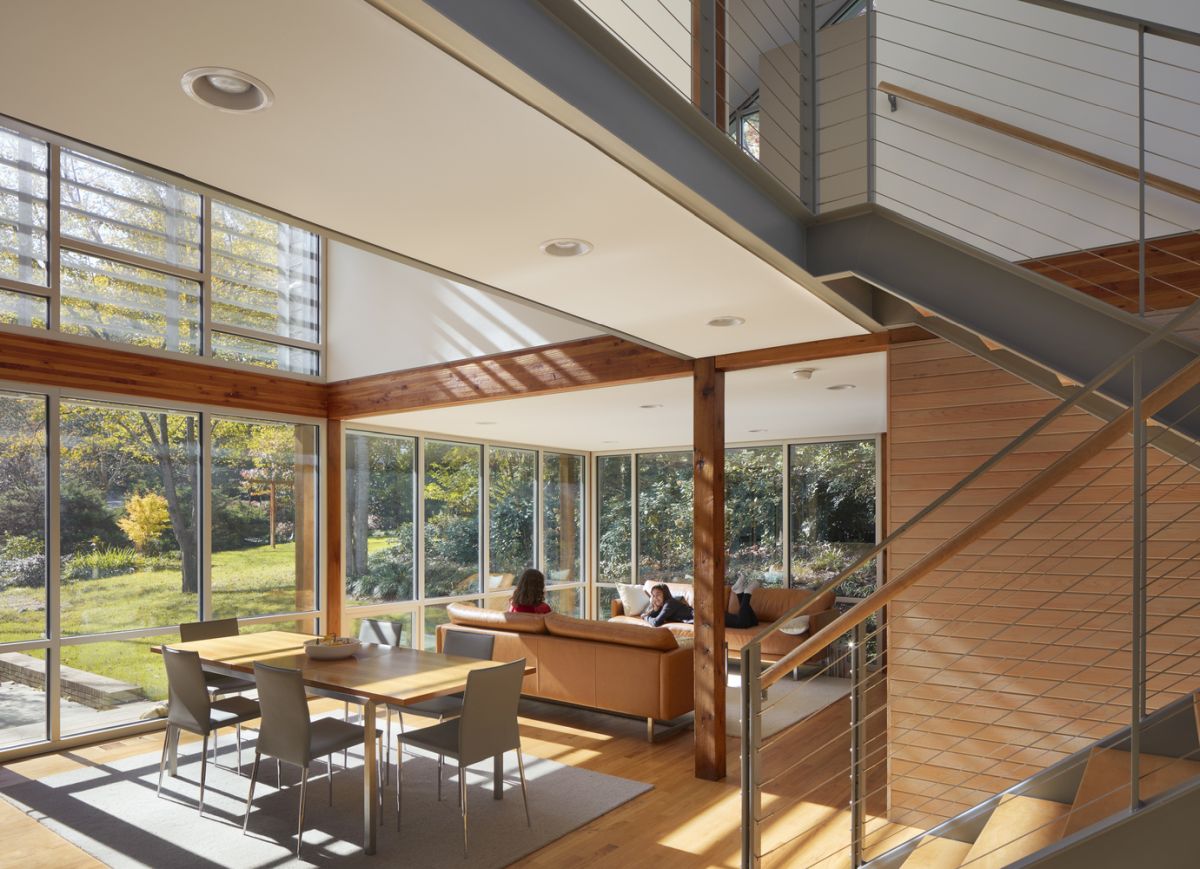
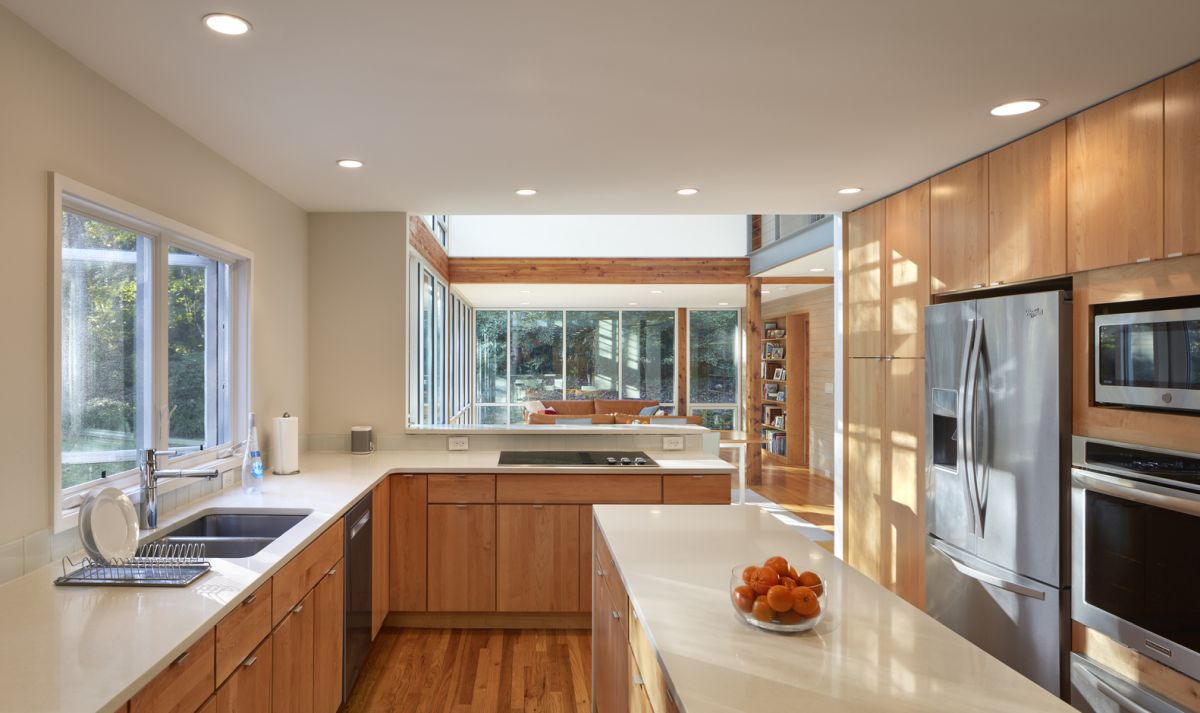
Everyday Suburban Escape
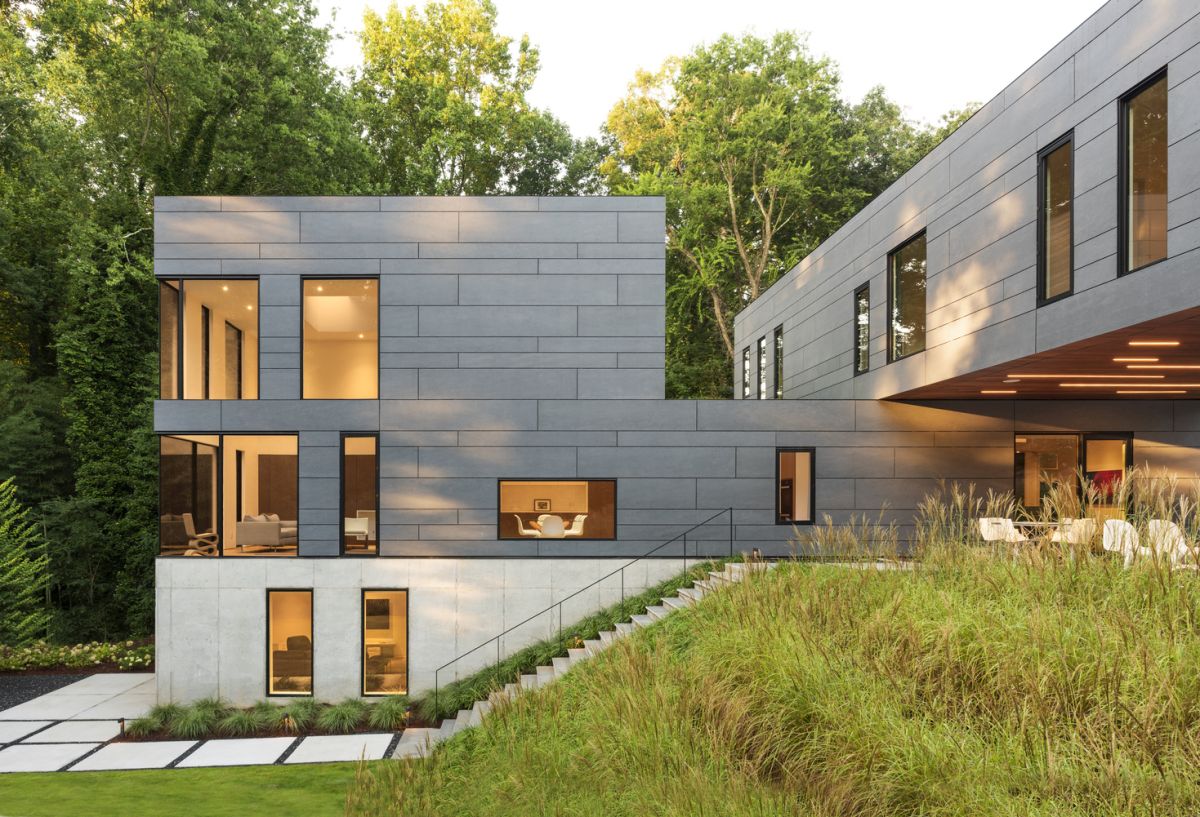
Demonstrating how a peaceful escape can be constructed close to a major urban center, this house in Atlanta is a calm oasis that looks nothing like the cookie-cutter homes found in the suburbs. Designed by DiG Architects, the Split Box House has a simple form that started as a box twenty-two feet wide — the maximum width where no interior support walls are required. The two forms are mainly clad in low-maintenance grey cement panels, which are were installed as an open joint ventilated rainscreen to help control moisture and reduce energy consumption. The underside is finished in ipe wood. The main box is split into a double-height public area and a private one, which is turned ninety degrees to give better views of the woods beyond. Skylights and insulated windows use mainly sunlight for illumination. In the backyard, a series of walls are set into the steep slope, creating a terraced garden that flows down the hill.
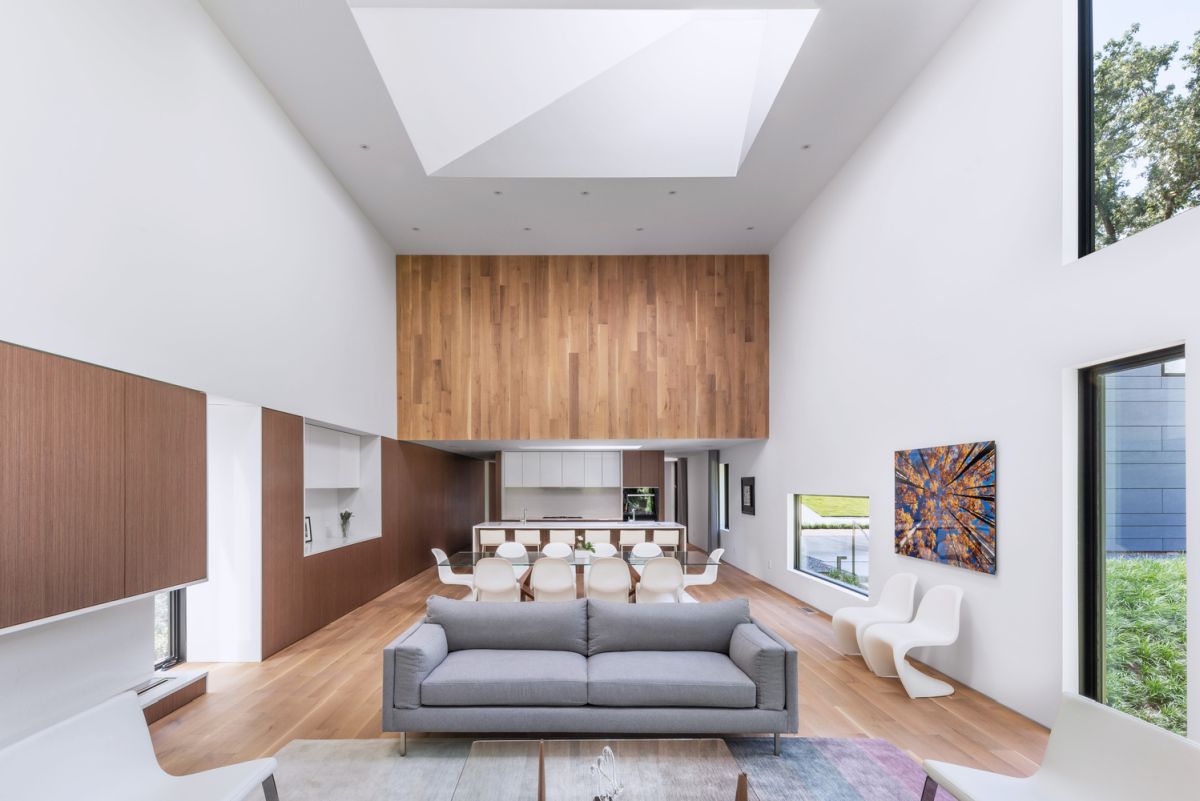
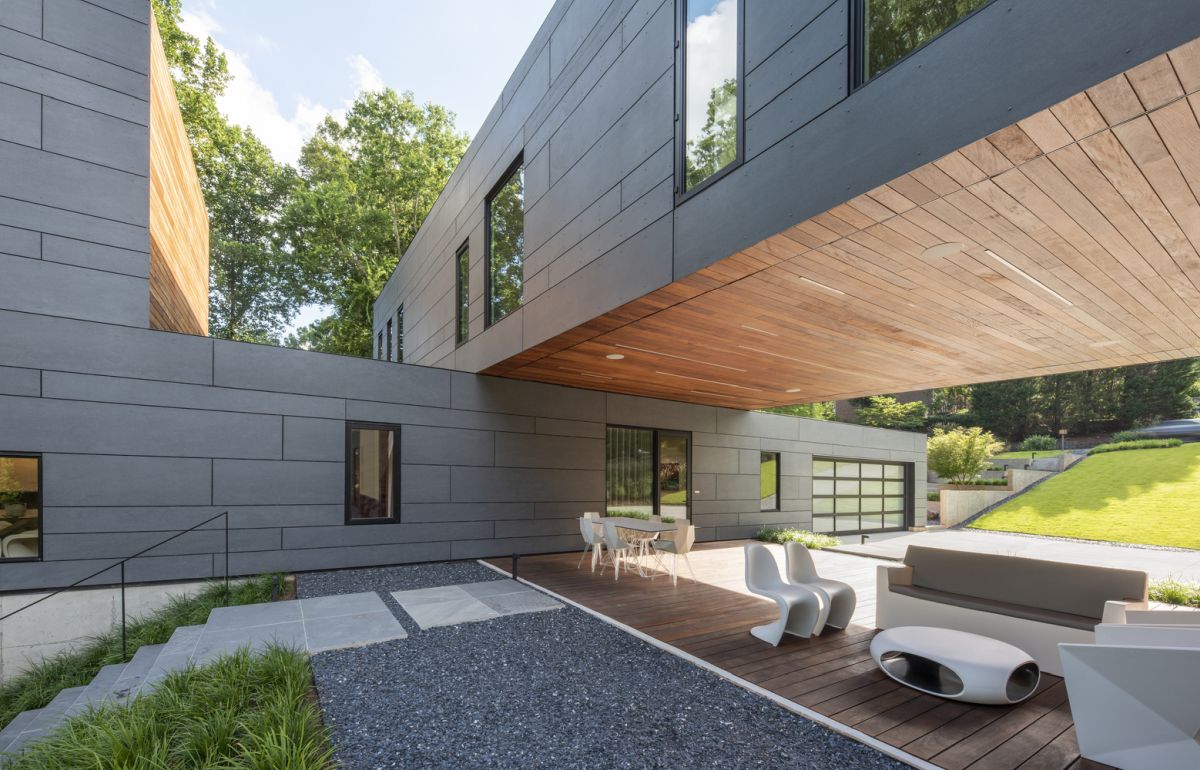
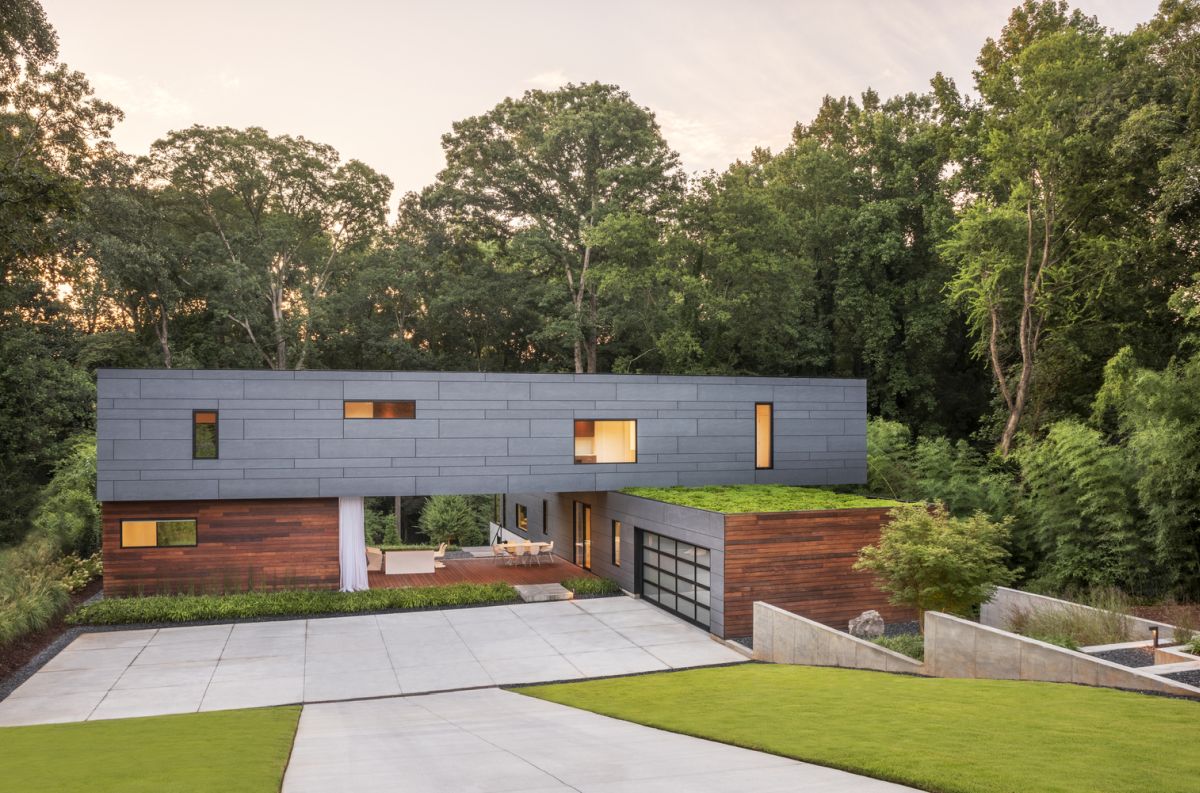
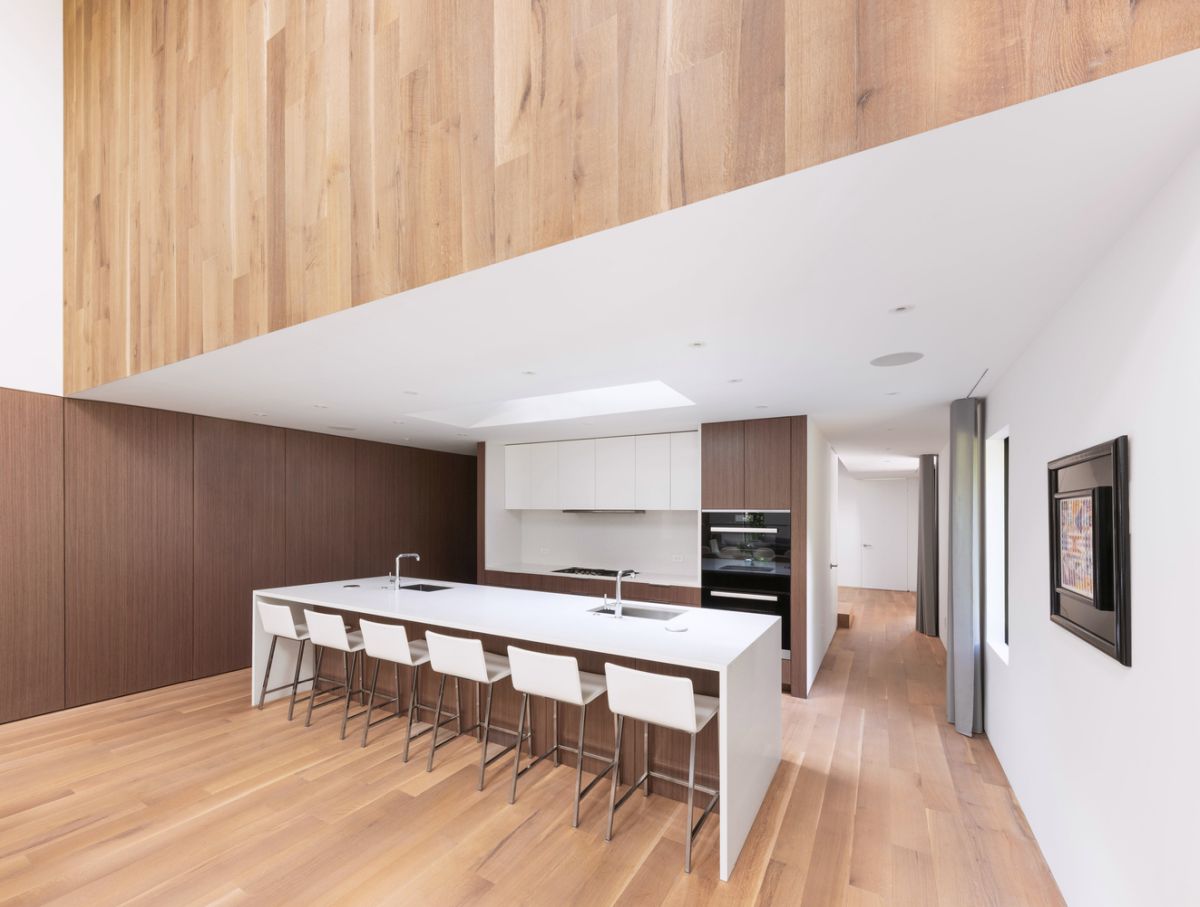
Work/Life Combination
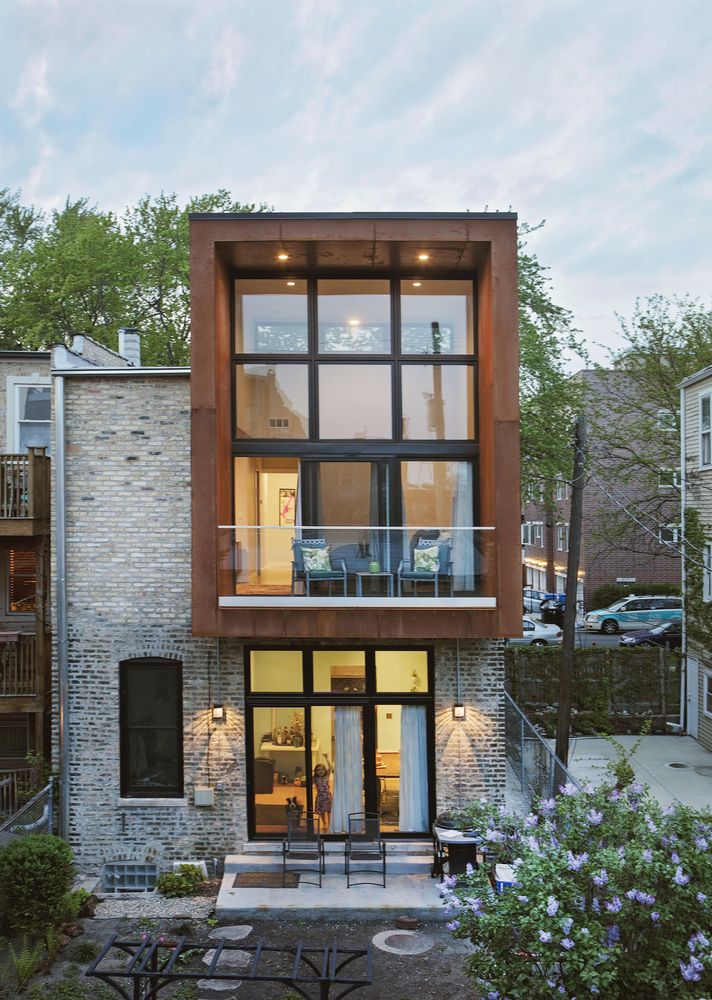
Transforming a masonry structure that was out of sync with the neighborhood, this Chicago home was renovated to accommodate a workspace in the front and residential areas in the back and upstairs. While this was originally a dual-purpose structure, moss Design transformed it into a more modern, comfortable iteration. Making use of a historic butcher cooler that was preserved on the main floor as a divider, the architects focused on creating a new master suite on the second floor, which led to the cantilevered section at the rear, with a double-height bedroom, bathroom and private deck. The new construction was clad in Corten steel and the recessed style provides shade to the upstairs balcony. The roof of the new cube includes a system to collect rainwater that drains into a collection are for garden use.
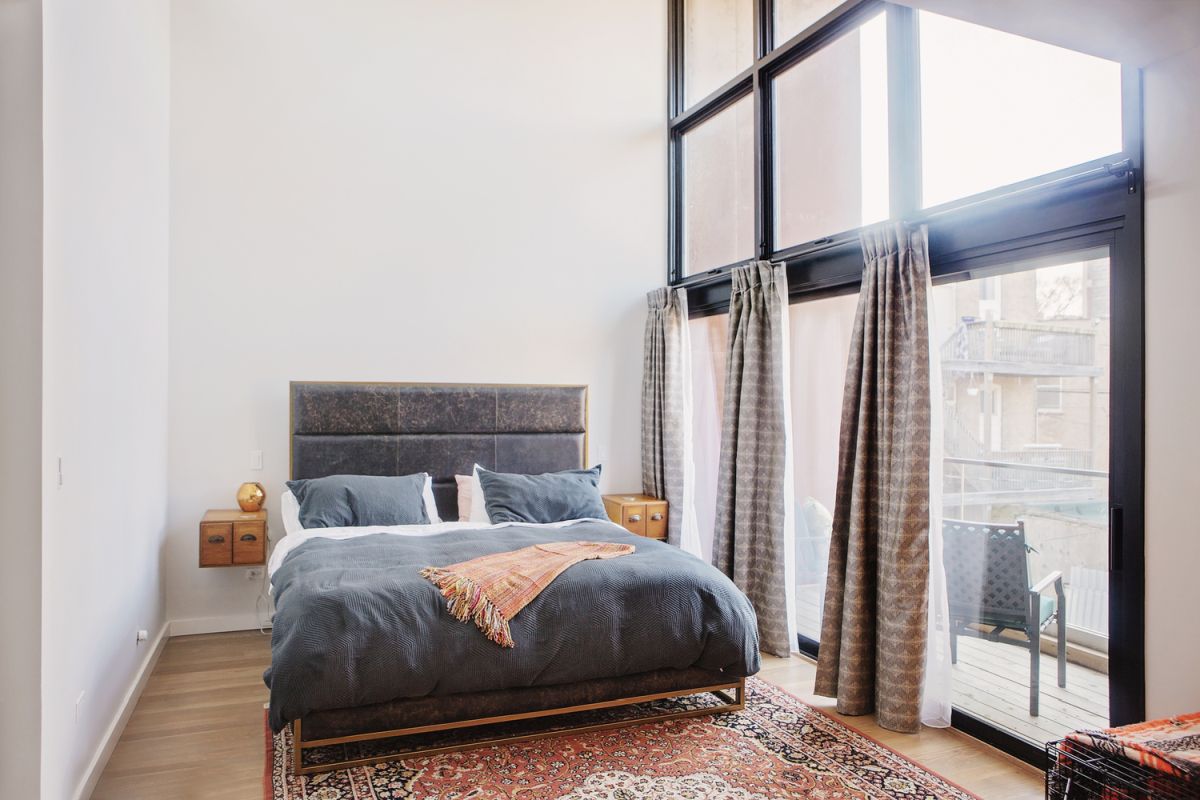
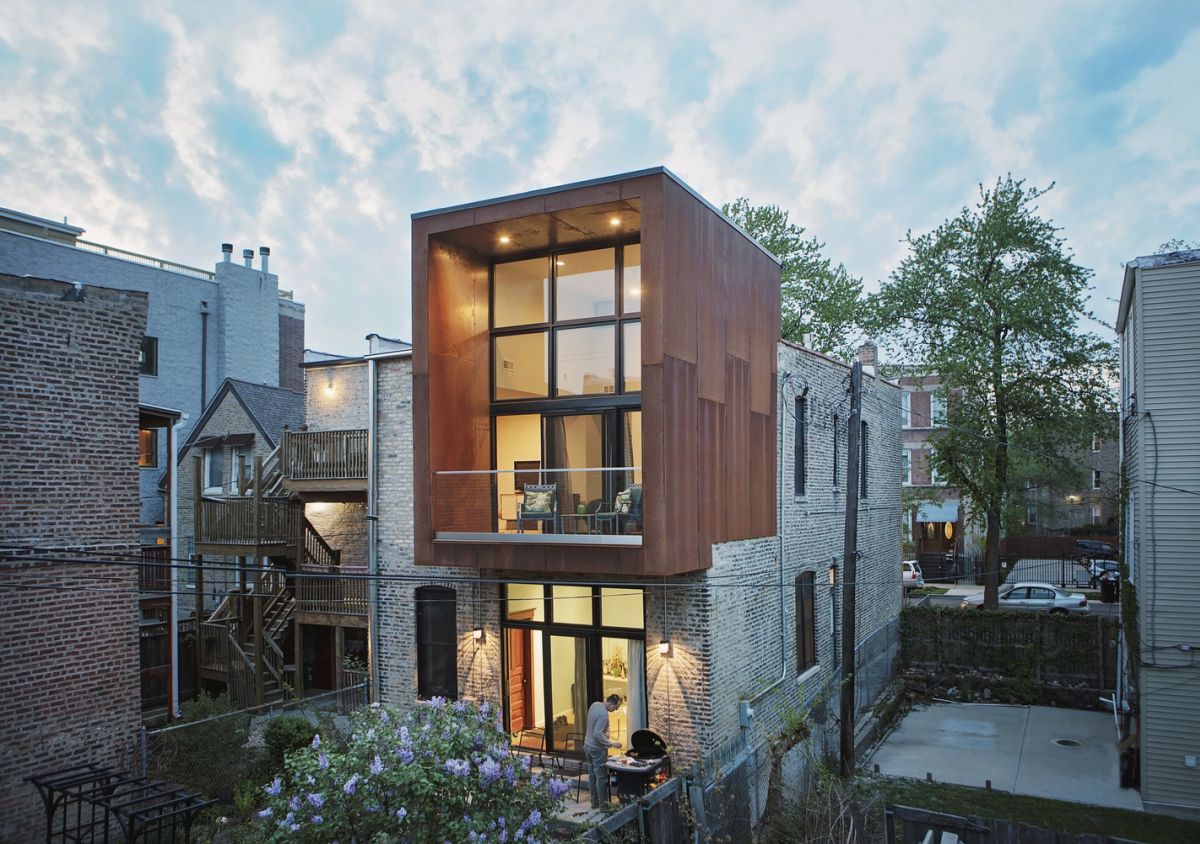
Multigenerational Solution
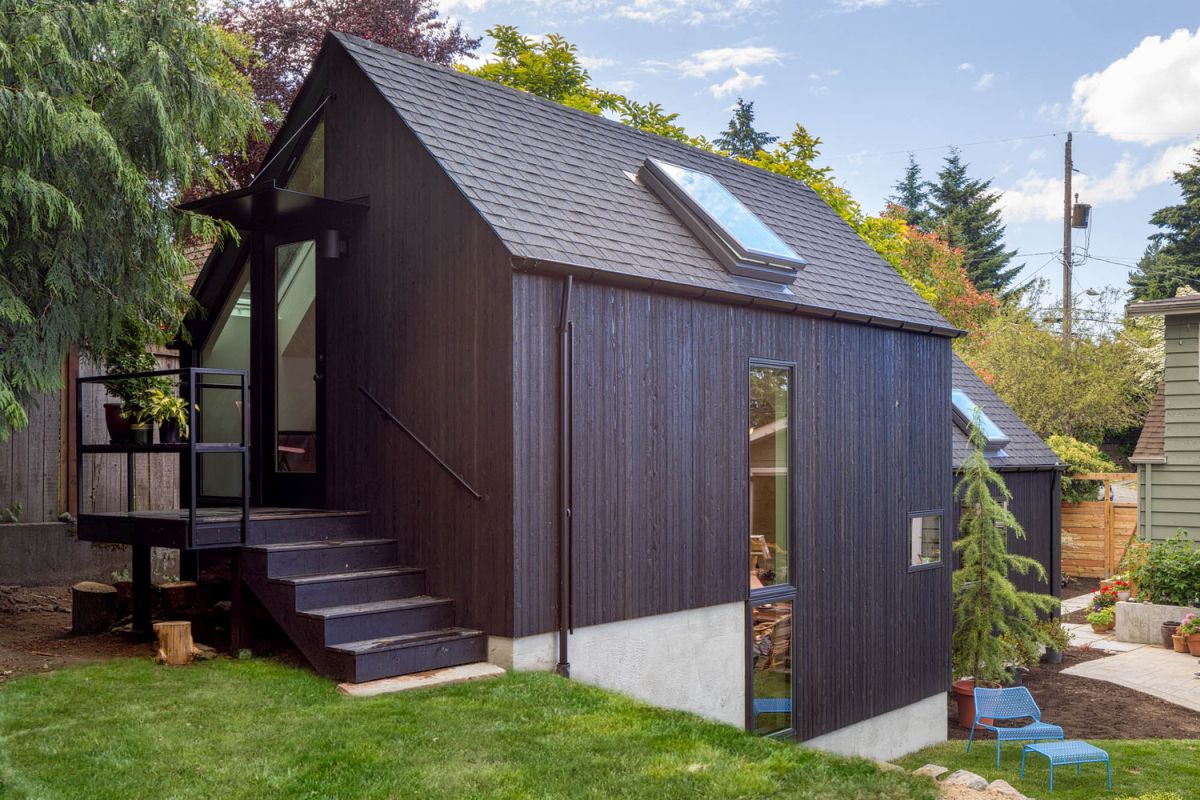
As our families age, people are finding that there are not many housing options in the areas where they live. In Seattle, however, Best Practice Architecture has shown how you can accommodate an aging relative without sacrificing anyone’s privacy. Granny Pad is a multigenerational solution that converted a backyard garage next to a typical American house into spacious but separate living quarters. The 571-square-foot structure is now an airy, open living space that could also be used as rental unit, office, guest suite or studio. In consideration of decreased mobility, the living area was constructed as one large open space at ground level. Plentiful windows and skylights bring lots of natural light into the space, which has an entry, kitchen and sitting room. A few steps inside is the bedroom, closet with laundry and bathroom. A loft above the bathroom is used for storage but can easily be transformed for another function.
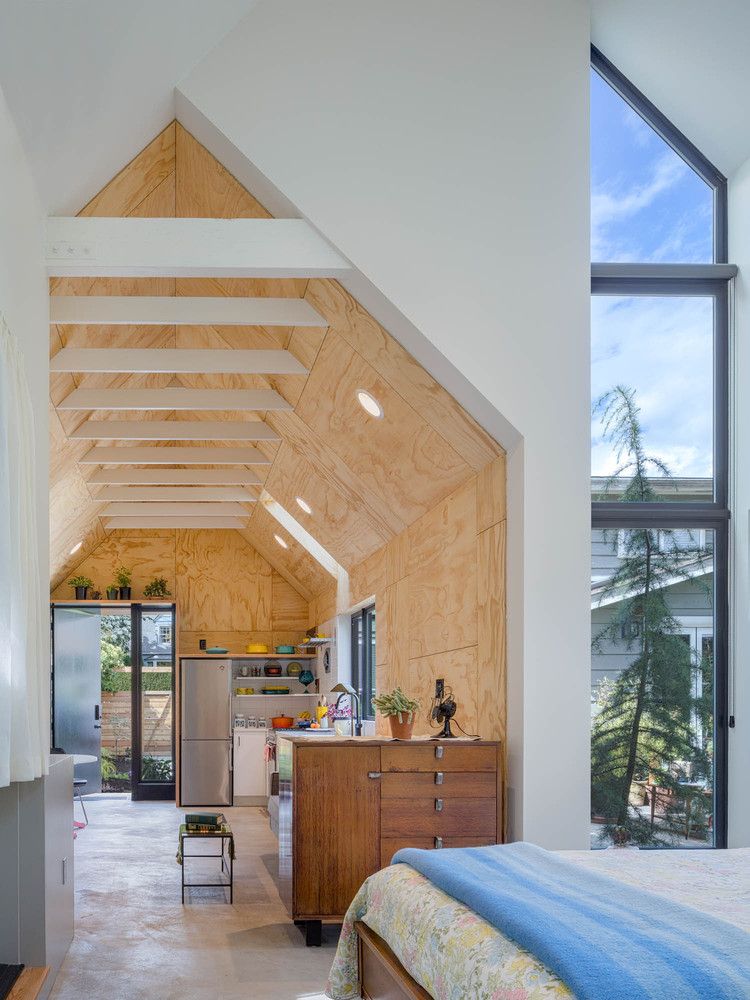
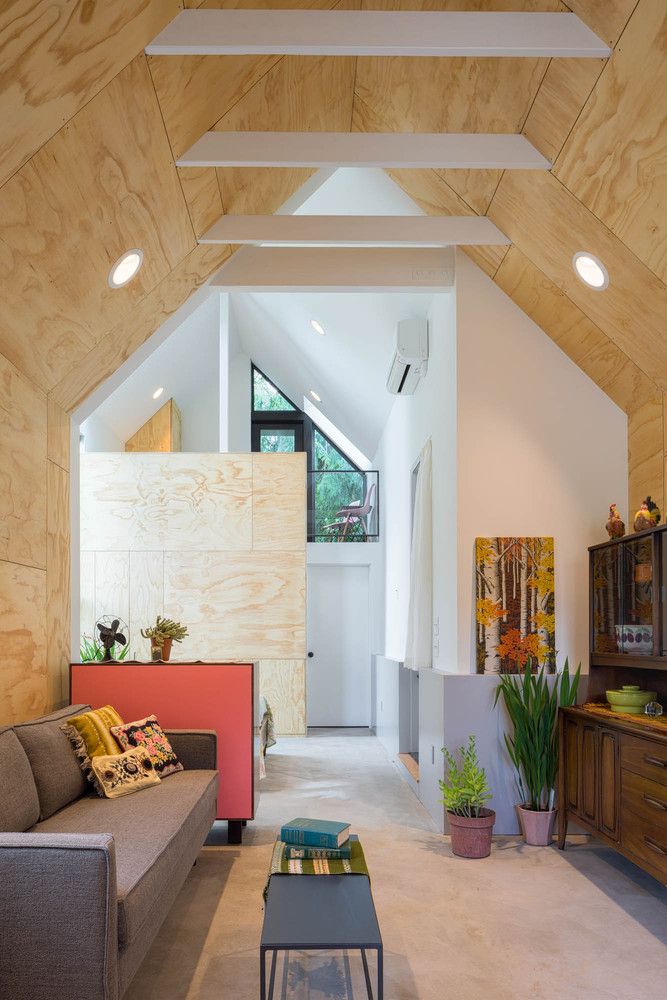
Unobtrusive Montauk Weekend Home
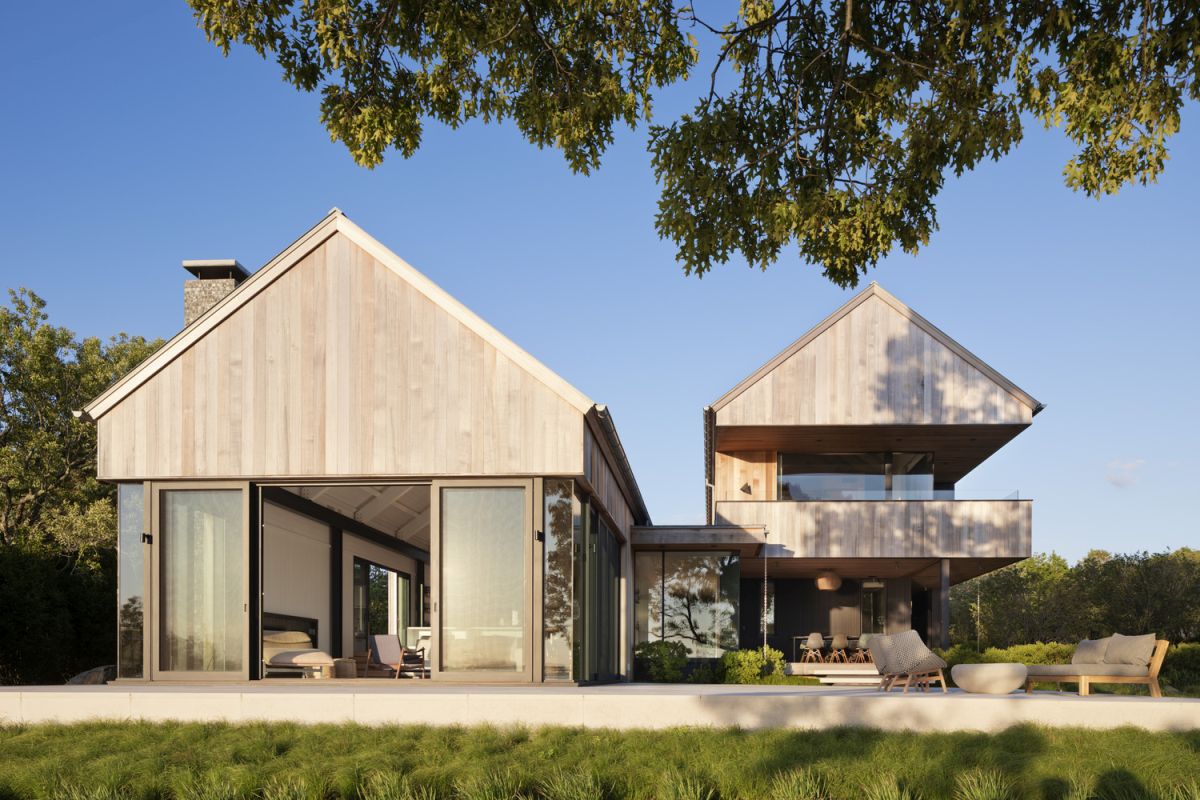
In a stroke of unusual luck, these homeowners were able to purchase two adjacent lots in Montauk, Long Island, allowing them to have two nature-focused structures. Designed by Robert Young Architects, the main house and guest house/garage have low profiles and use plenty of natural materials such as rough-sawn cedar planks, solid bronze hardware and raw zinc roofs. Instead of one giant mega-house, the construction of two forms leaves plenty of natural space in between adding to the serenity of the property. Each one is sited to make the most of the views of Lake Montauk as well as wide-open water views. The main living spaces have windows and oversized sliding doors separating them from the outdoors, which makes an ideal location for informal indoor/outdoor living. The main house is for the family while the guest bedrooms are situated over the boathouse, providing panoramic views. The modern rustic interior has an exposed structural steel frame and a neutral palette of white and bleached wood.
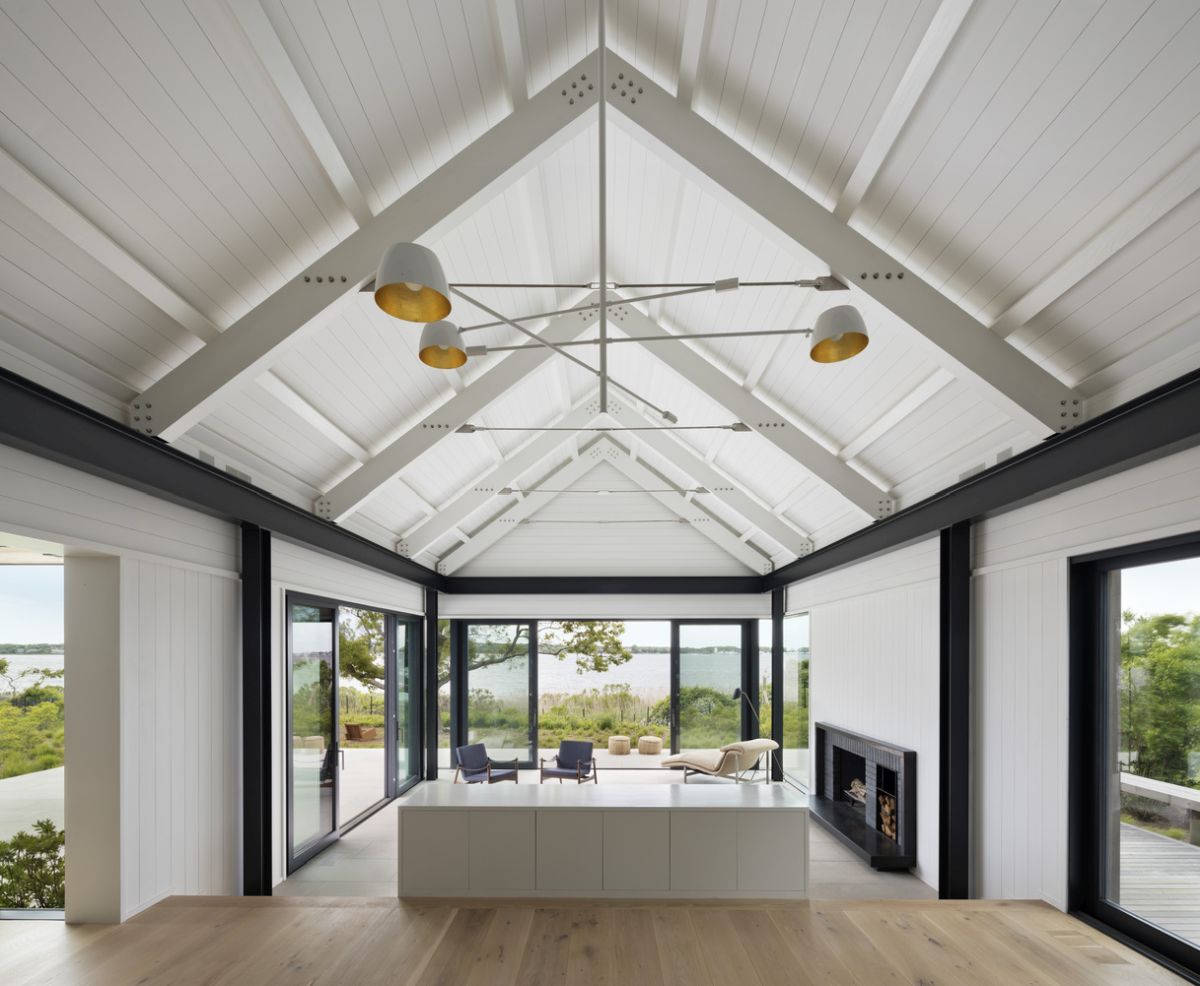
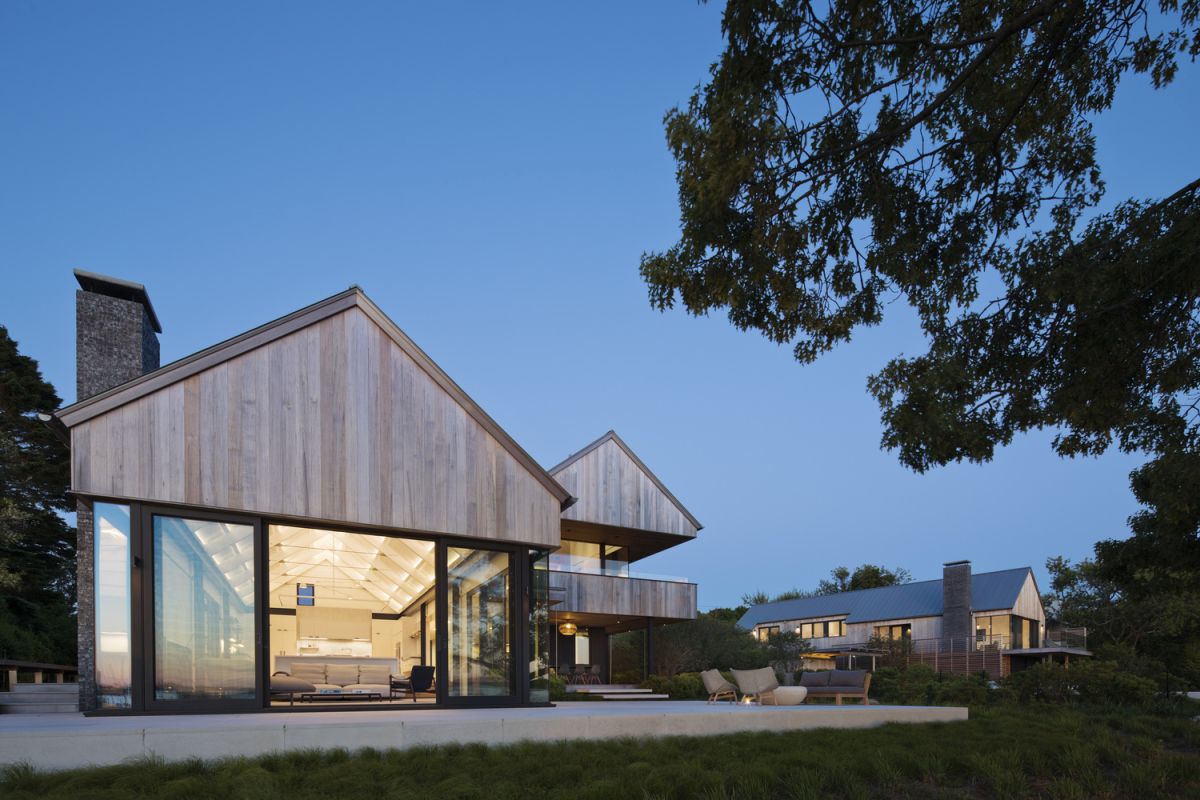
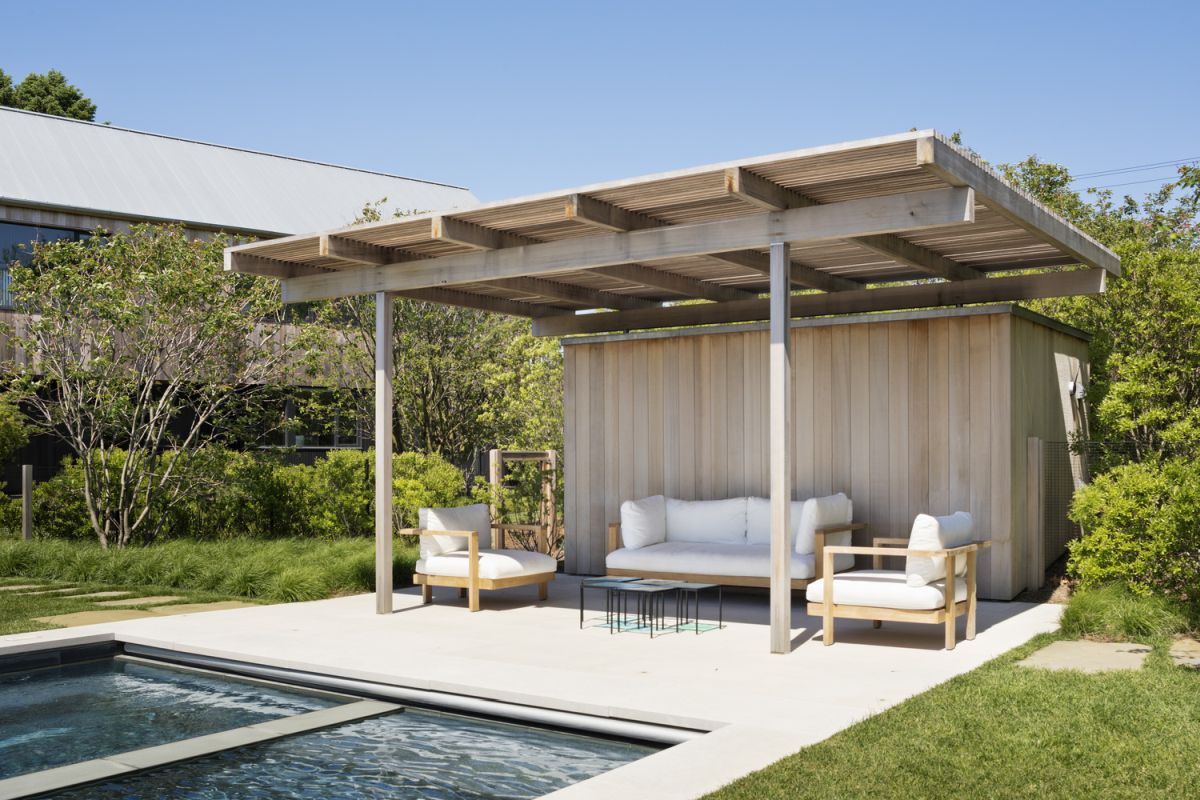
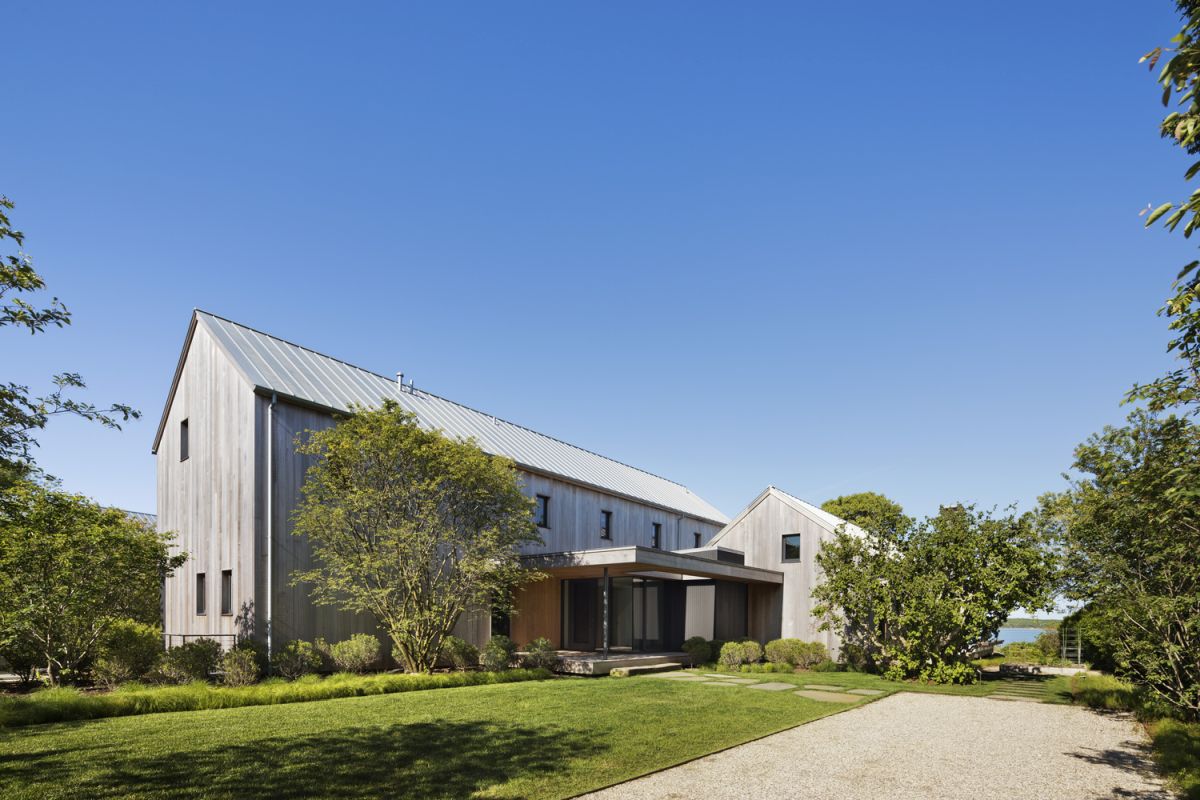
Rugged Steel-Clad Mountain Getaway
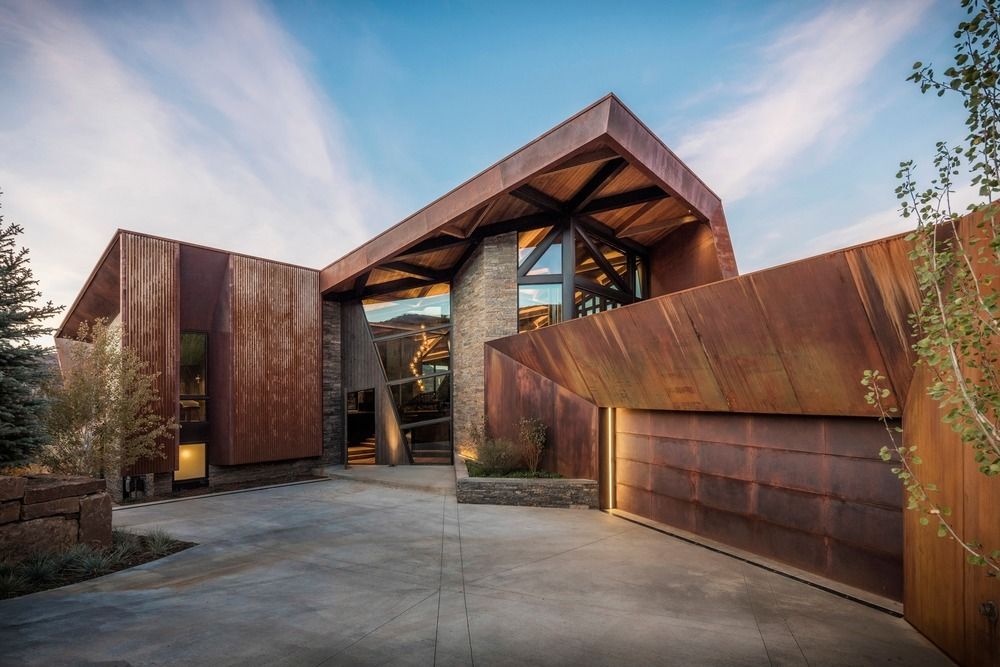
Some of the most beautiful homesites are also very remote and rugged, which can present some design challenges. This American house, designed by Skylab studio, shows how amazing modern style can be achieved just about anywhere. Owl Creek, located in Snowmass, Colorado, uses modern industrial materials to help it blend in with the landscape, particularly with the weathered Corten steel; exterior cladding. The residence is actually a stand-alone shared home for two families. All the living spaces are reminiscent of a lodge and are at the front and center of the home, while bedrooms are separate. The design was devised to maximize the visual connection with the outdoor landscape so that it can be fully enjoyed in an=y season.
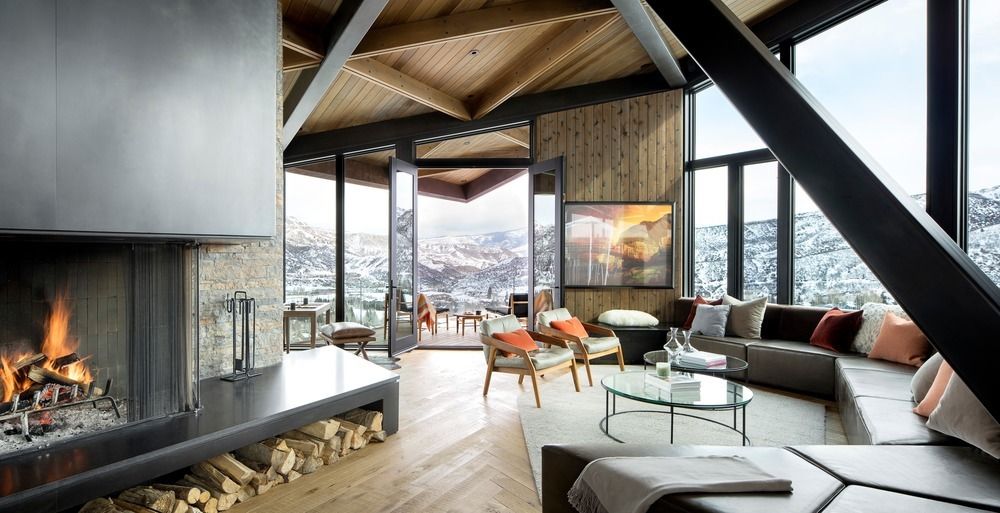
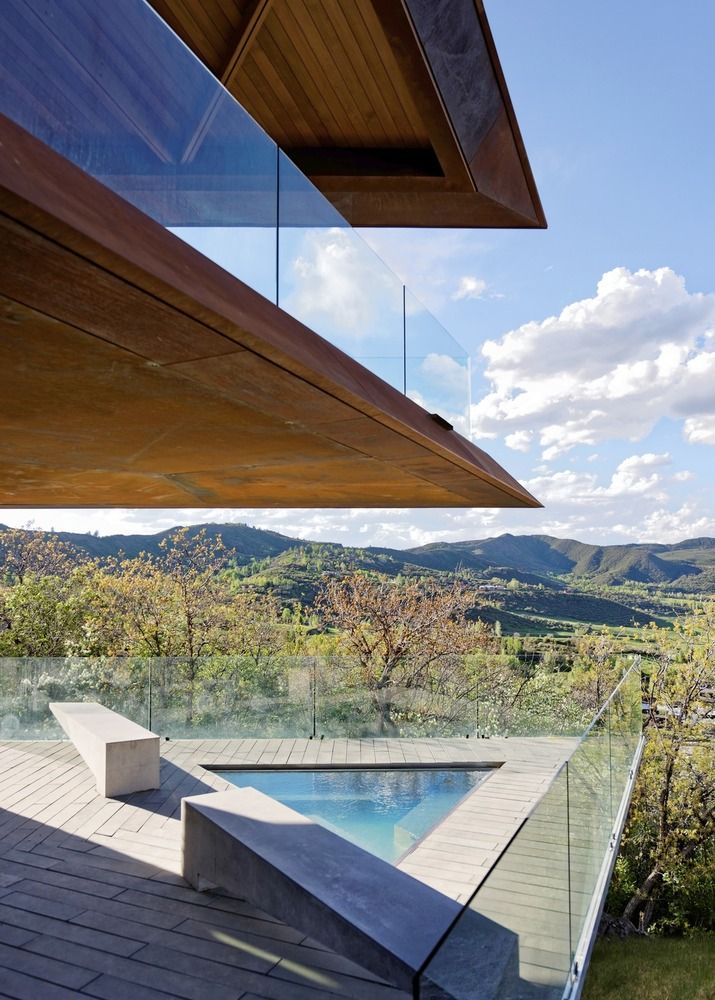
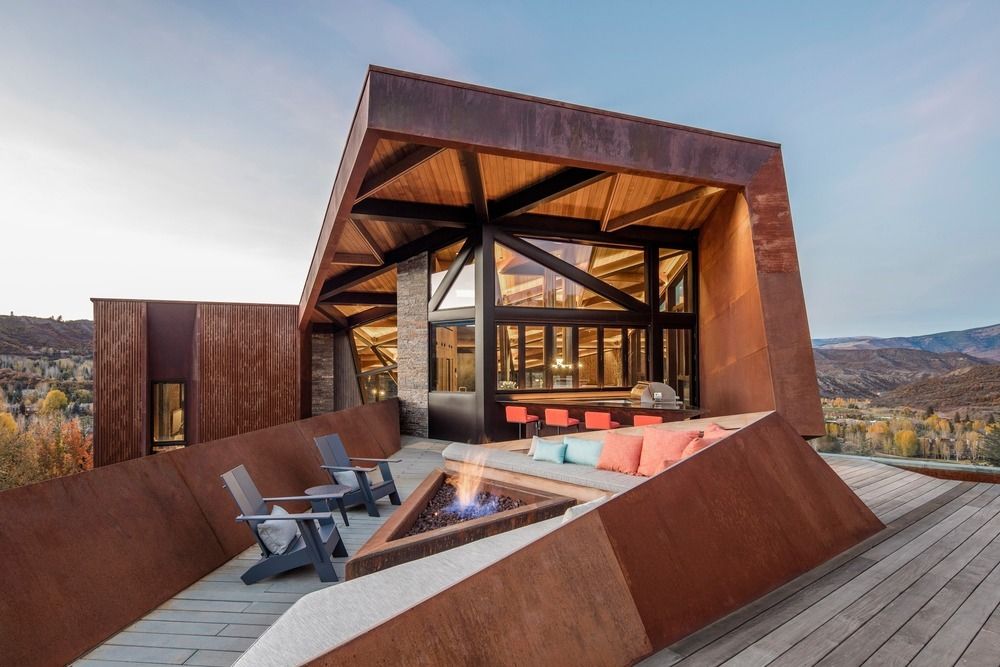
The post Don’t Want a Typical American House? Look at These Very Different Home Designs appeared first on Home Decorating Trends – Homedit.
